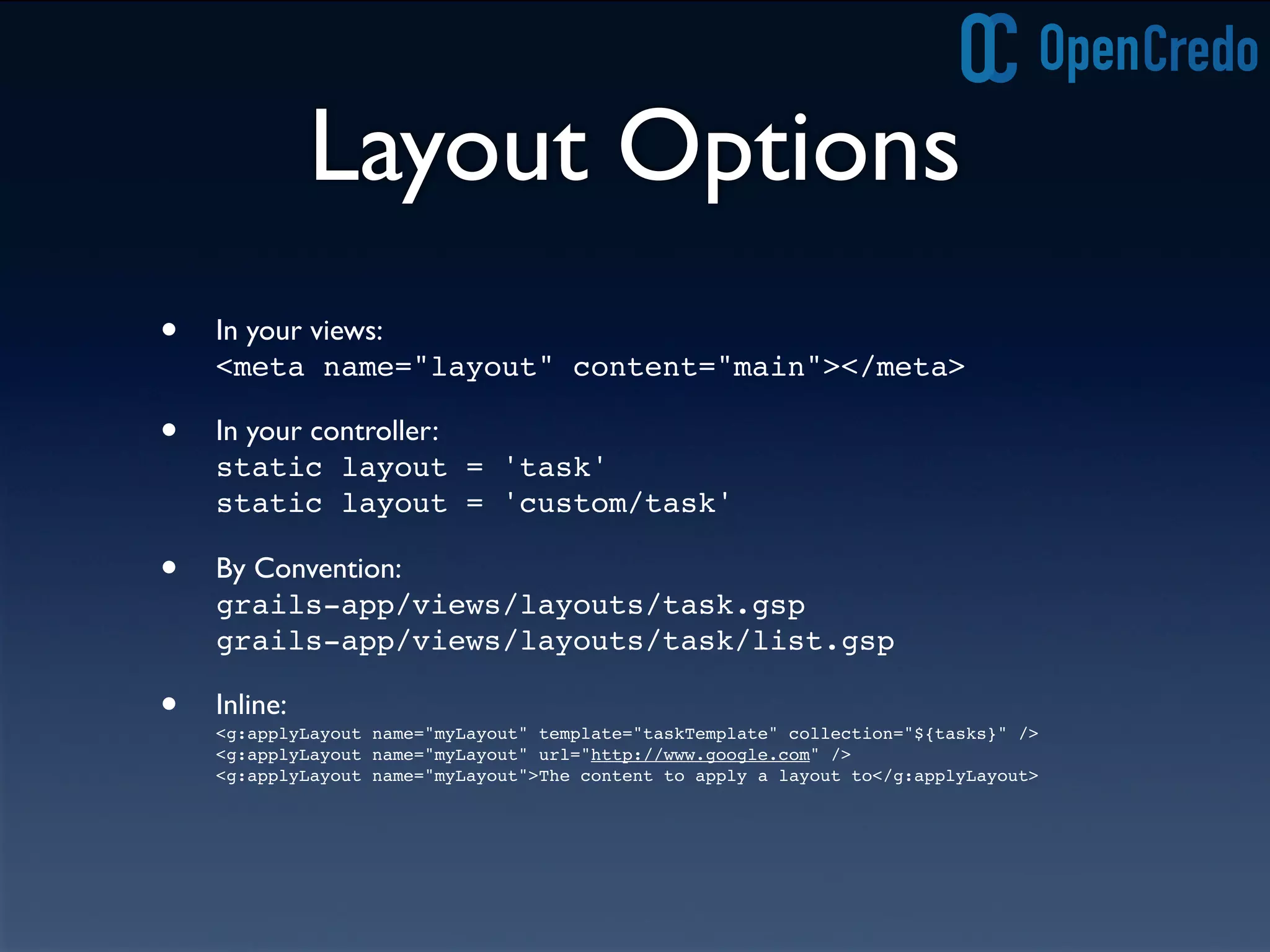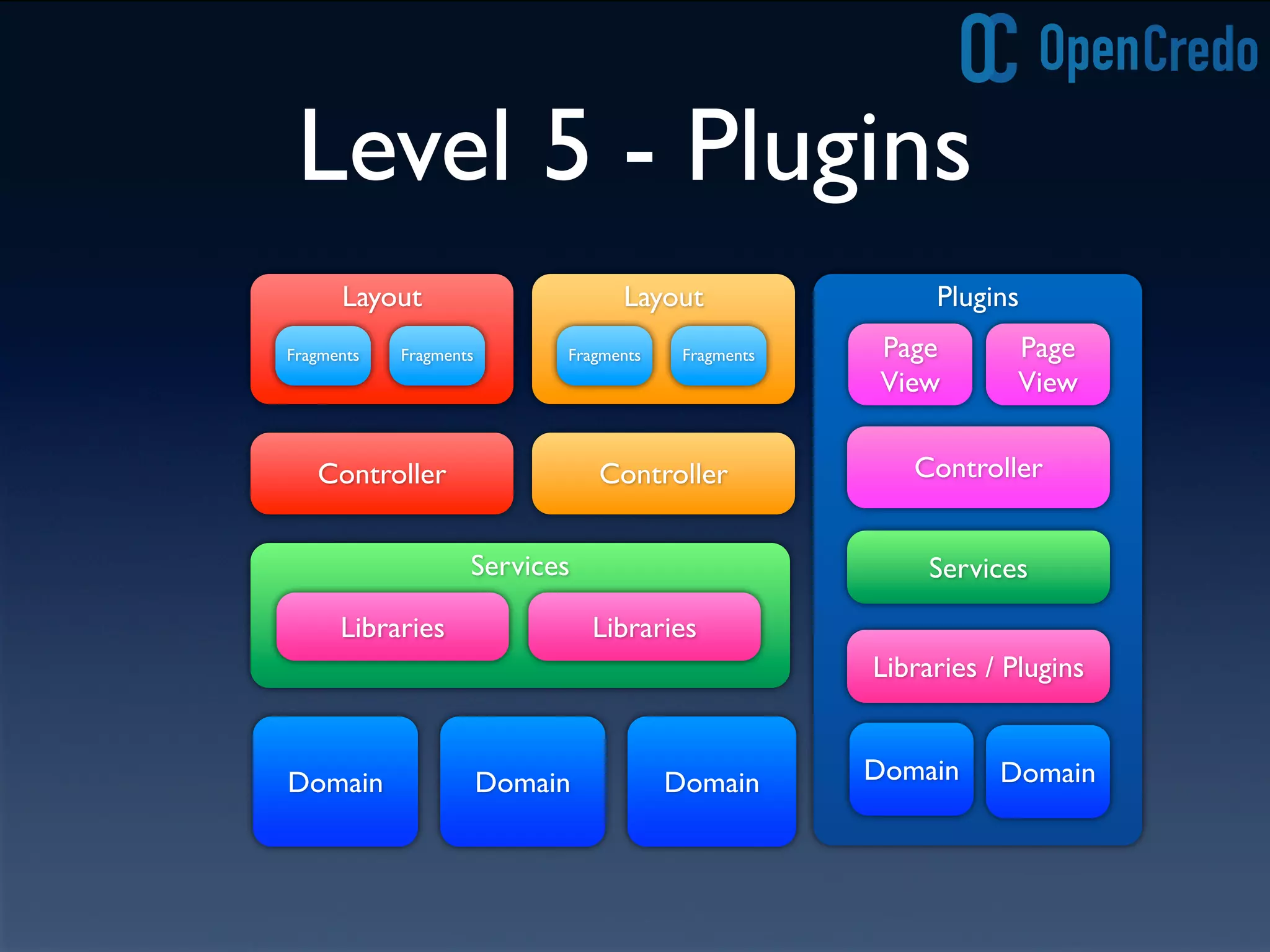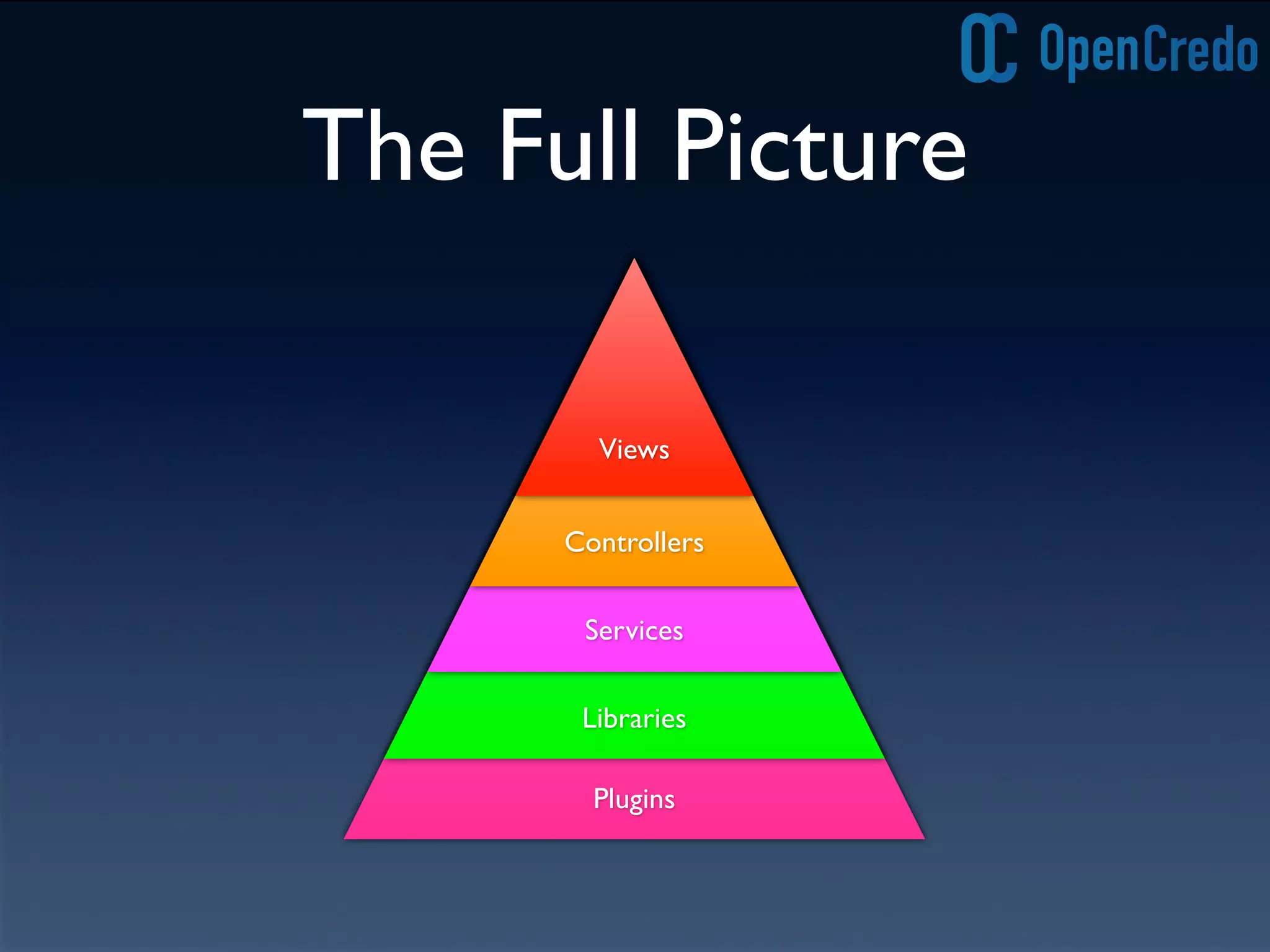This document provides an overview of a coding dojo focused on domain-driven design and test-driven development. It outlines 5 maturity levels and describes considerations for implementing user stories to build a Pomodoro task tracking application. These include domain modeling, services, libraries, and plugins. The goal is to iteratively refactor the application, extracting common code and improving architecture at each level.


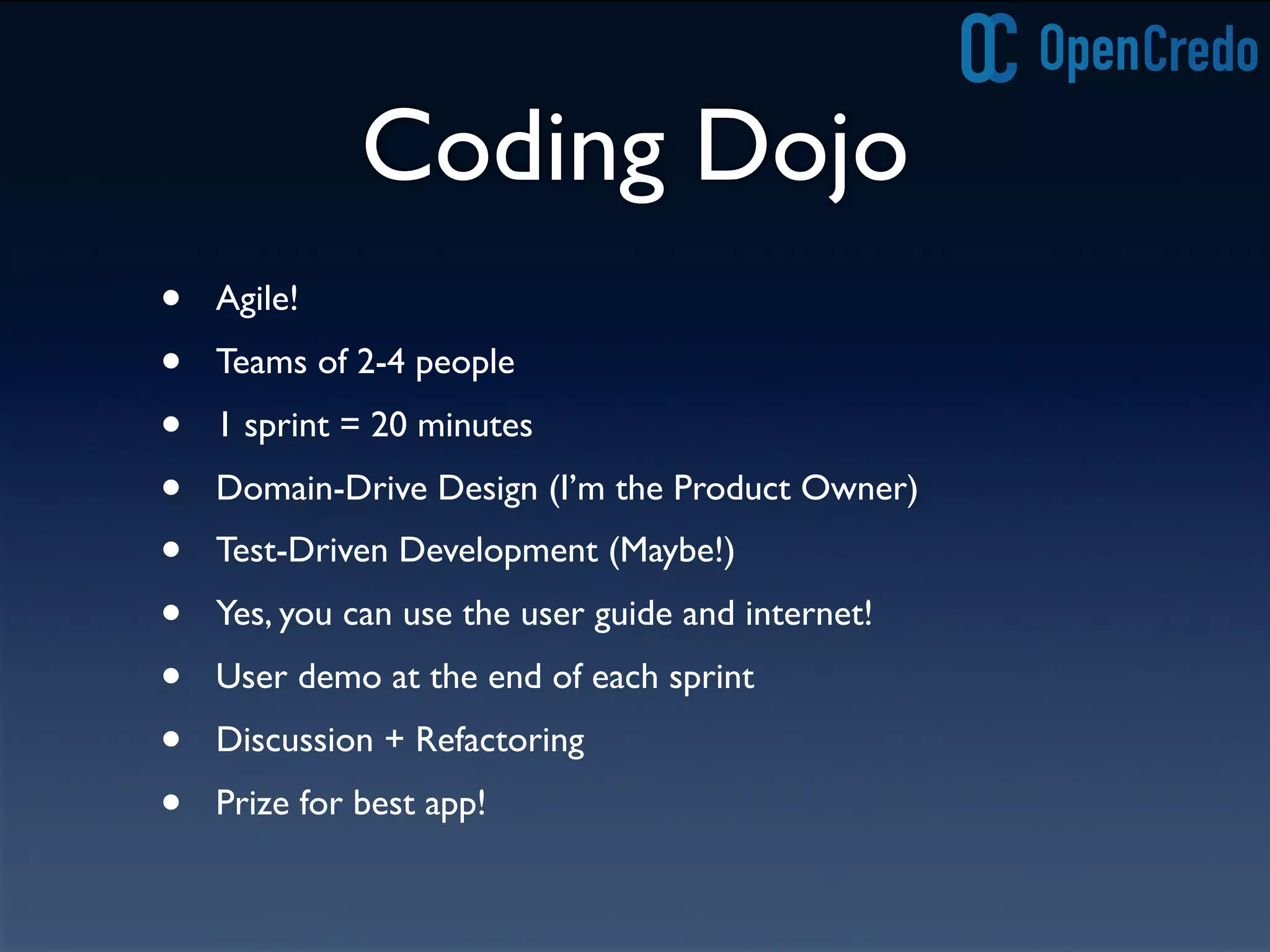
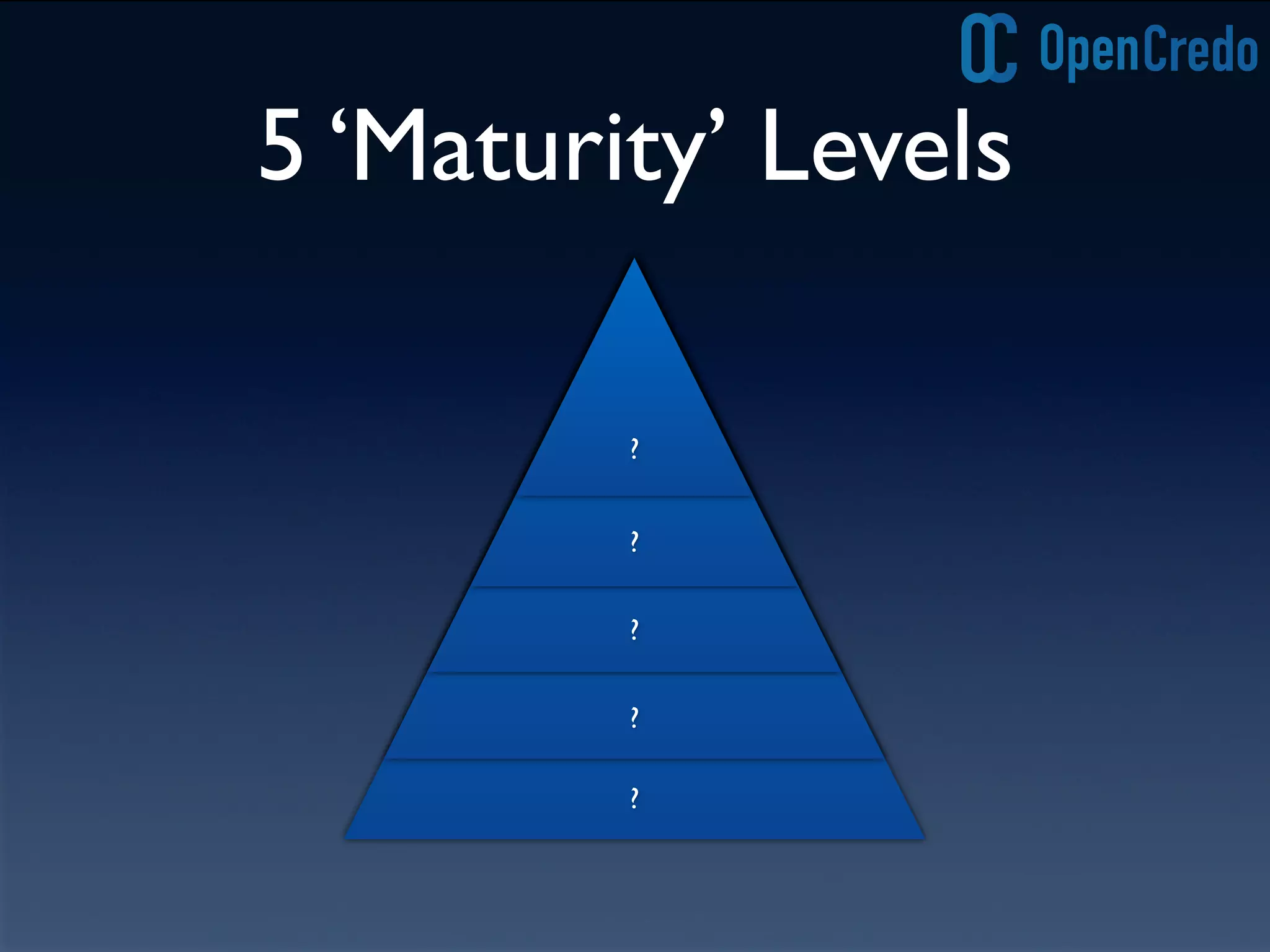
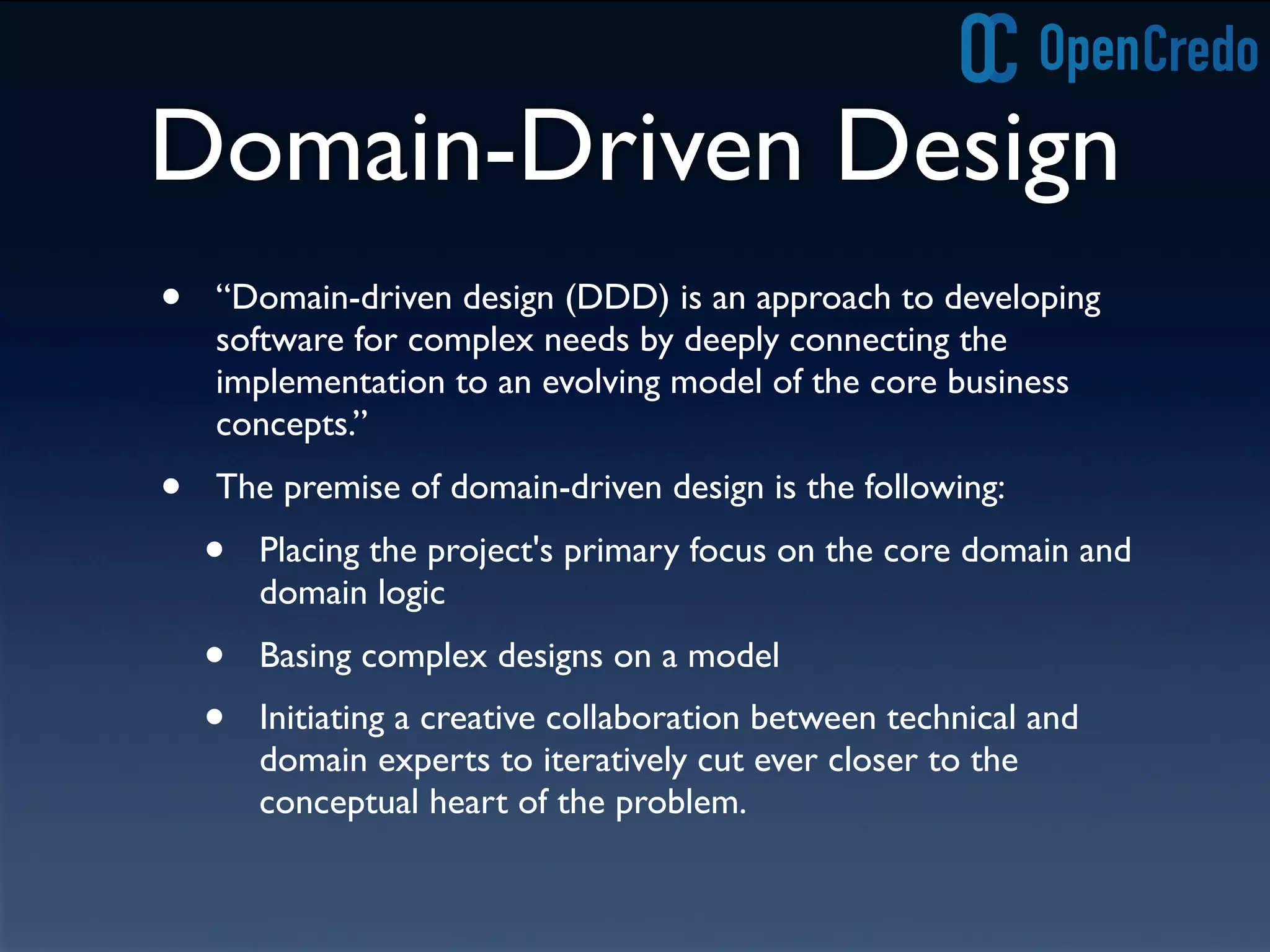

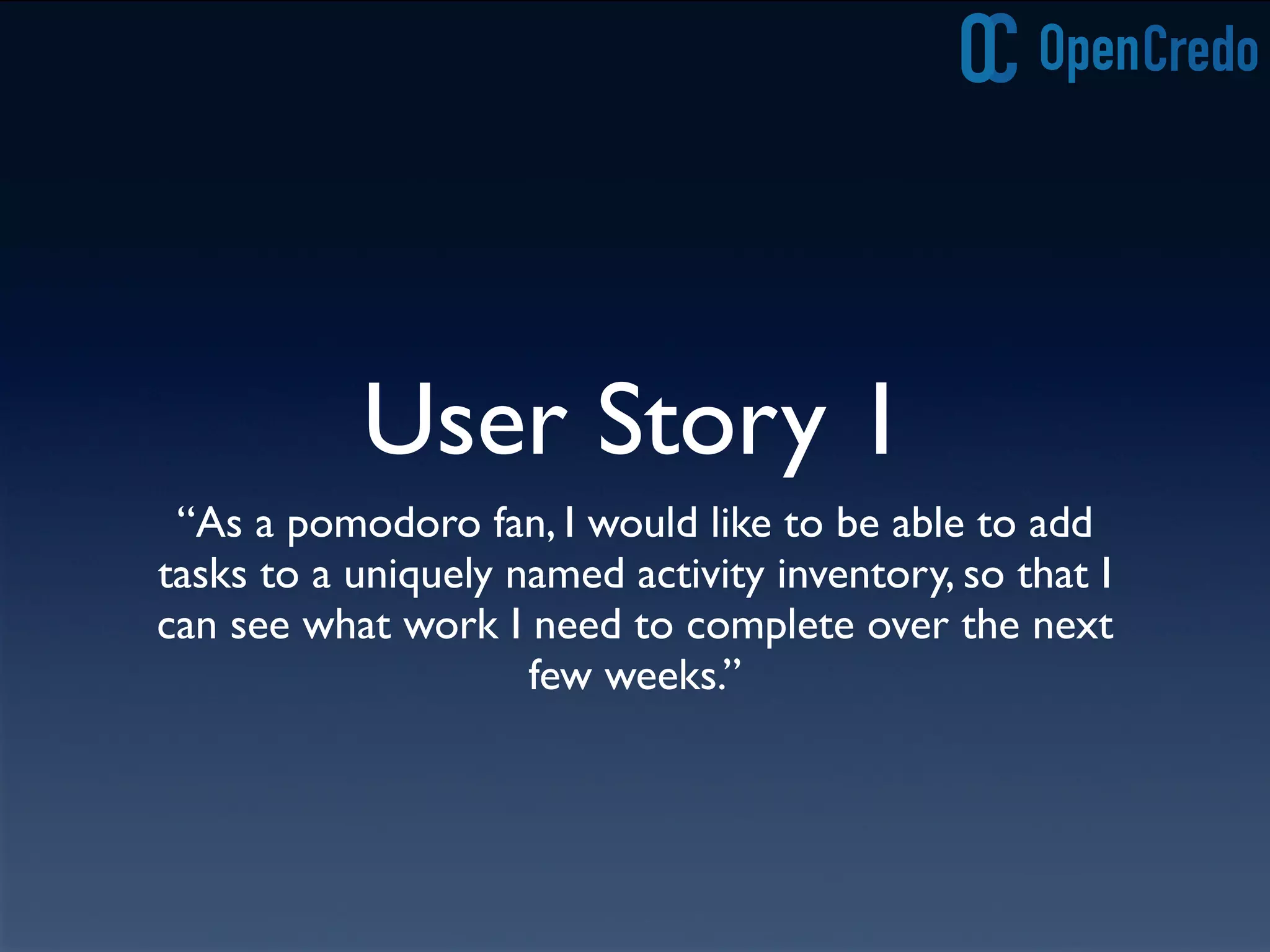
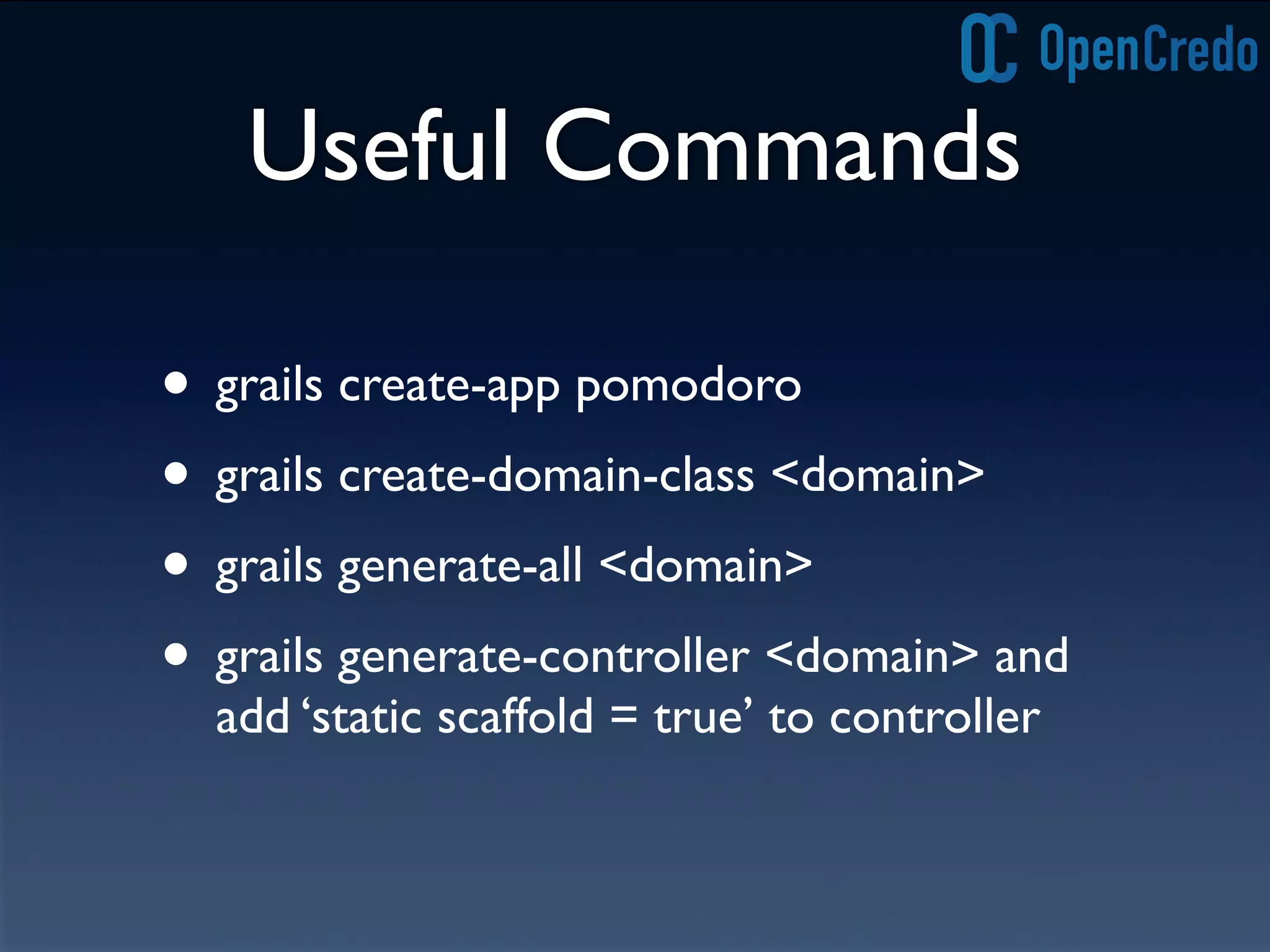
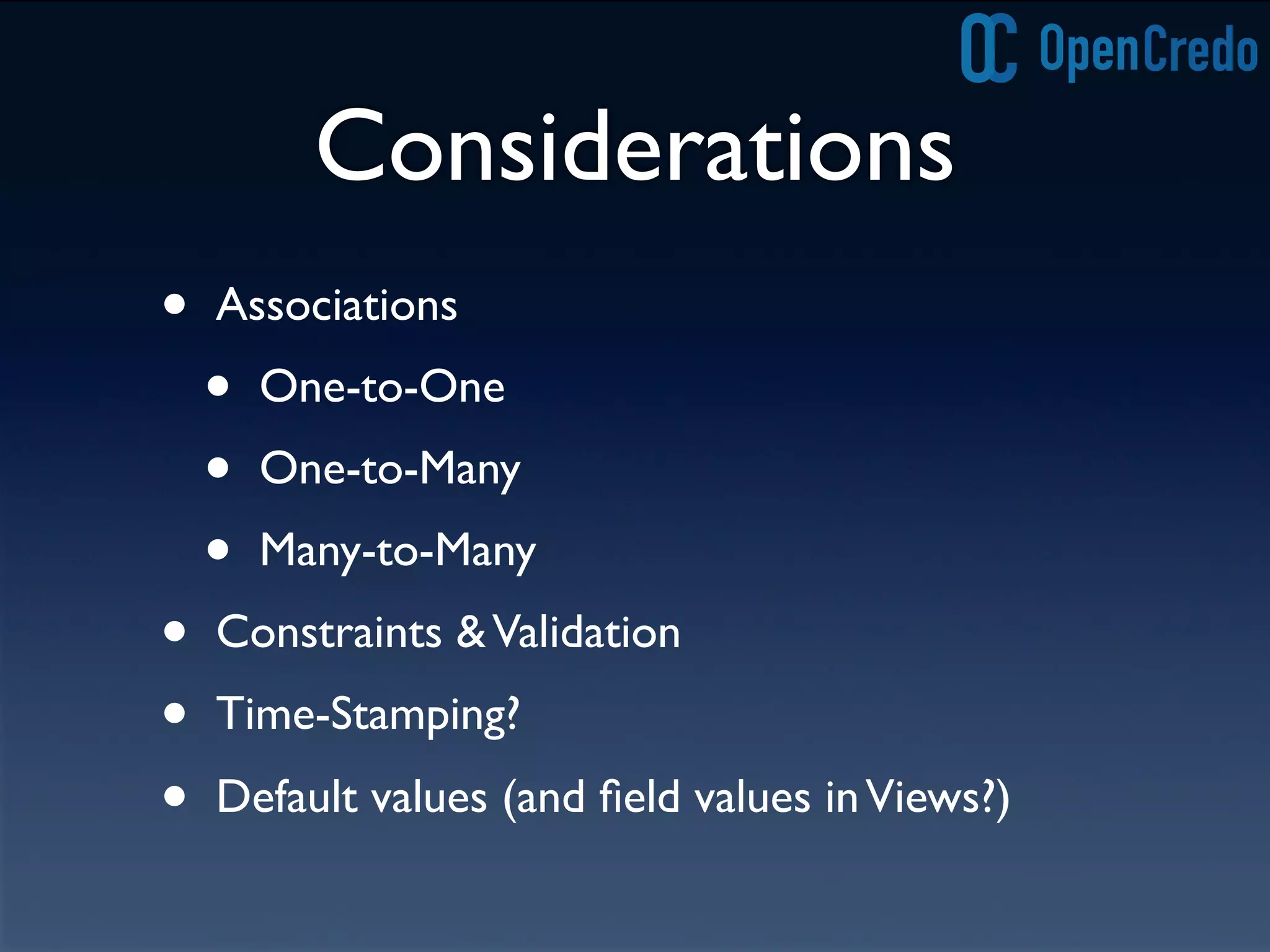
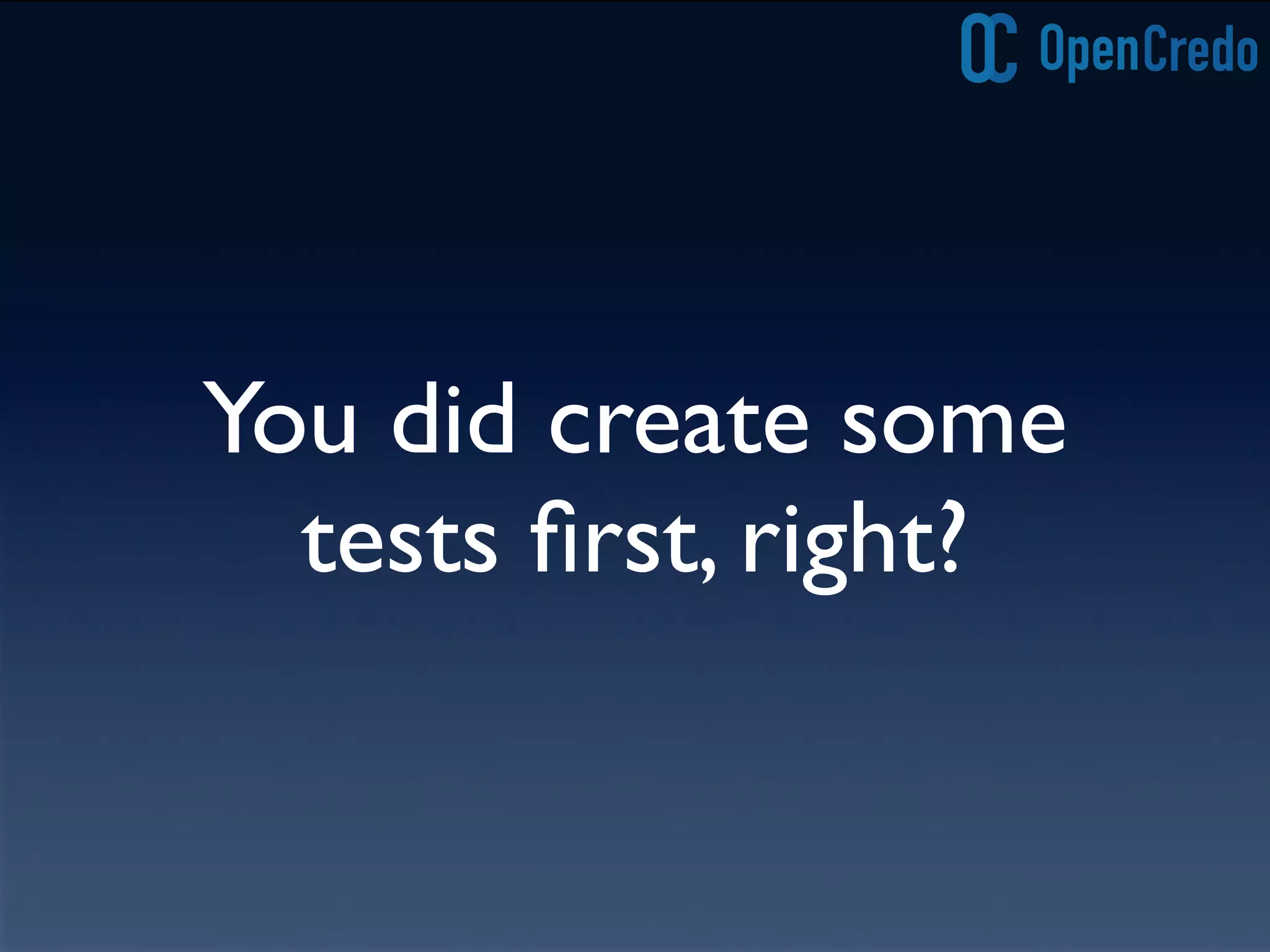
![Implementation
class Task {
Inventory inventory
String description
static belongsTo = [Inventory]
static constraints = {
description(nullable: false, blank: false)
}
}
class Inventory {
String name
static hasMany = [tasks: Task]
static constraints = {
name(nullable: false, blank: false, unique: true)
}
}](https://image.slidesharecdn.com/grailspatternsandpractices-130726073609-phpapp02/75/Grails-patterns-and-practices-11-2048.jpg)
![Domain Tests
class InventoryTests extends GrailsUnitTestCase {
void testConstraints() {
def existingInventory = new Inventory(name: "Paul’s Inventory")
mockForConstraintsTests(Inventory, [ existingInventory ])
! ! // Validation should fail if both properties are null.
! ! def inventory = new Inventory()
! ! assertFalse inventory.validate()
! ! assertEquals "nullable", inventory.errors["description"]
! ! // So let's demonstrate the unique constraint.
! ! inventory = new Inventory(name: "Paul’s Inventory")
! ! assertFalse inventory.validate()
! ! assertEquals "unique", inventory.errors["name"]
! ! // Validation should pass!
! ! inventory = new Inventory(name: "John’s Inventory")
! ! assertTrue inventory.validate()
! }
}](https://image.slidesharecdn.com/grailspatternsandpractices-130726073609-phpapp02/75/Grails-patterns-and-practices-12-2048.jpg)
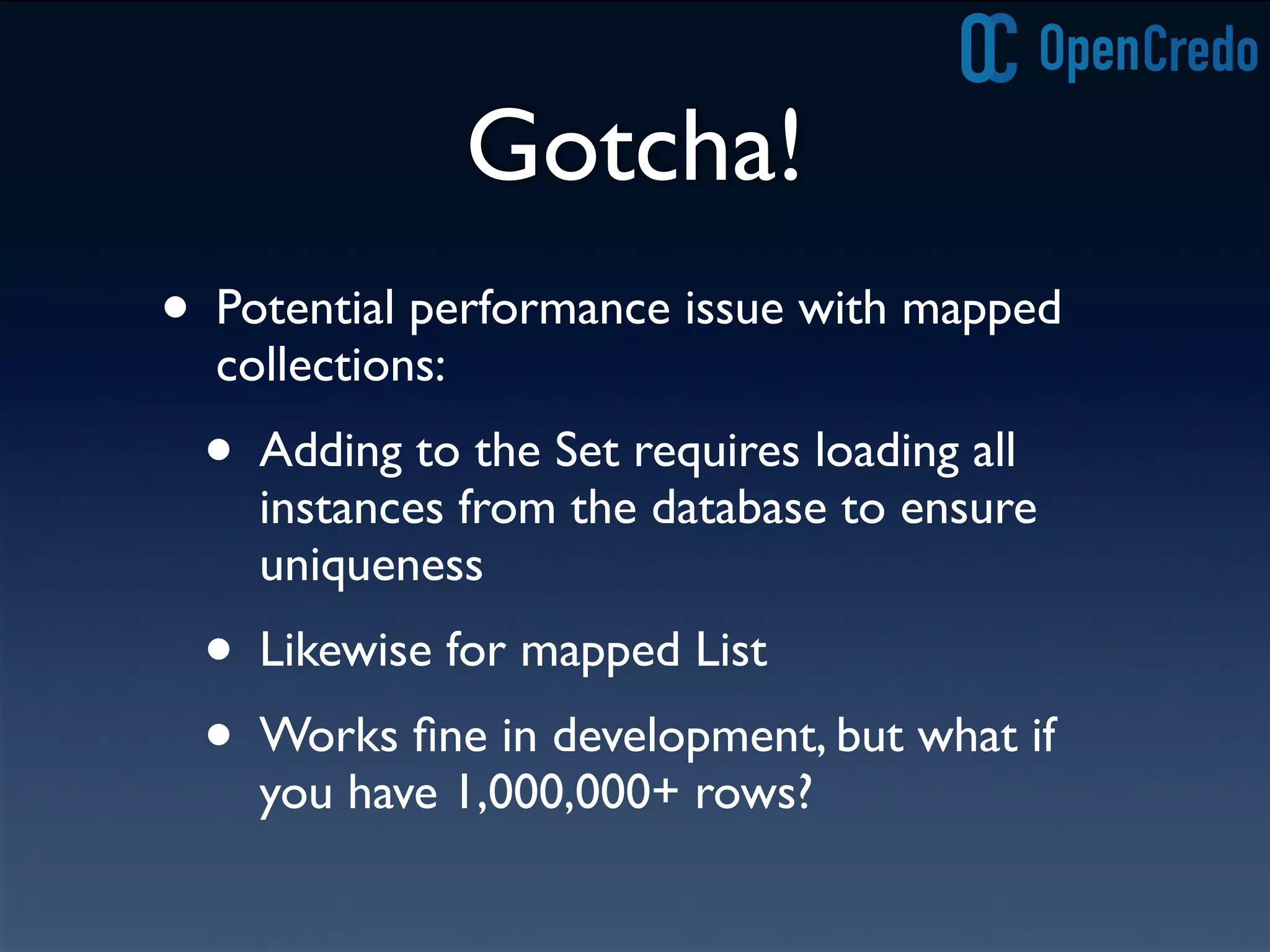
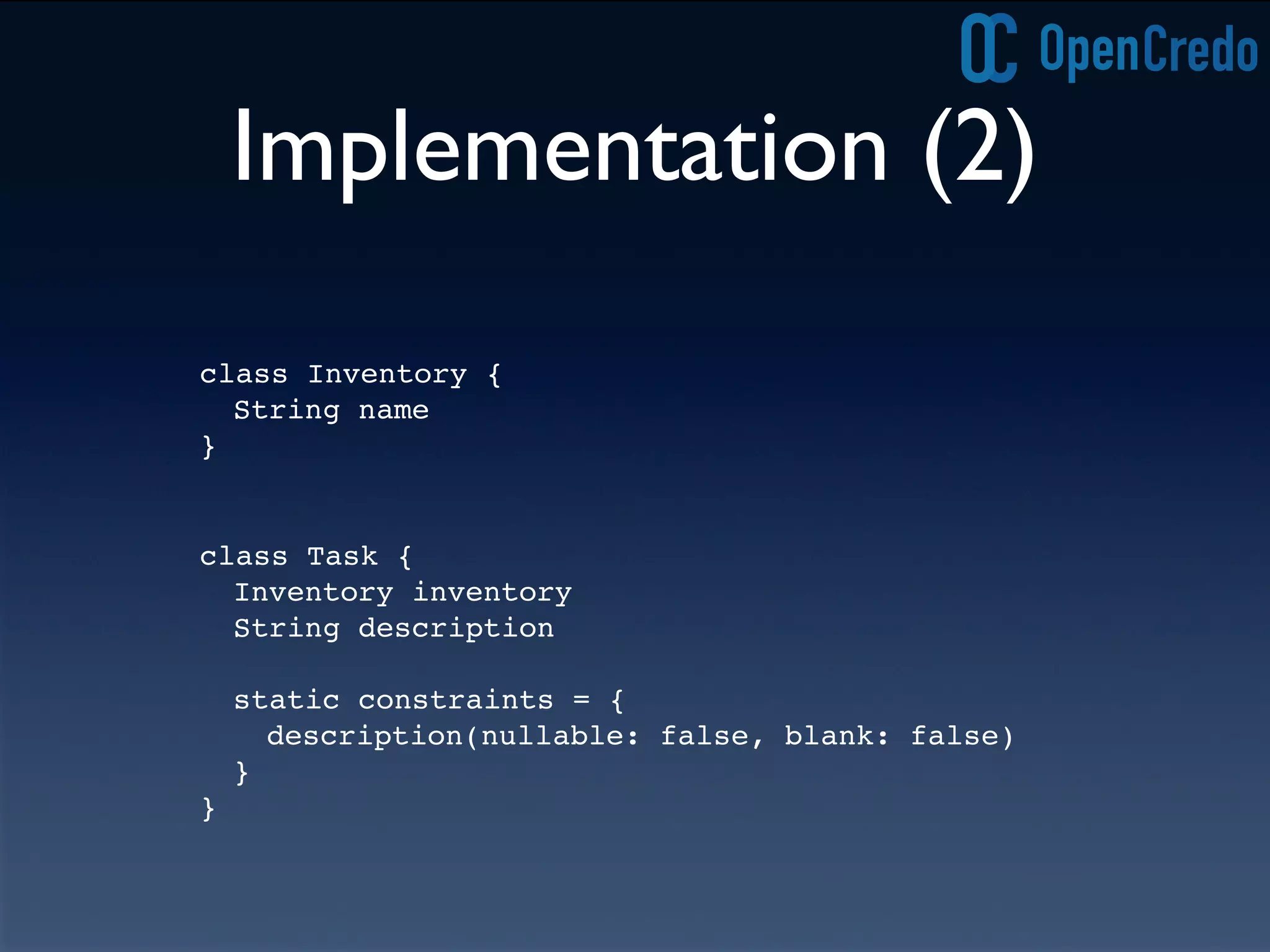
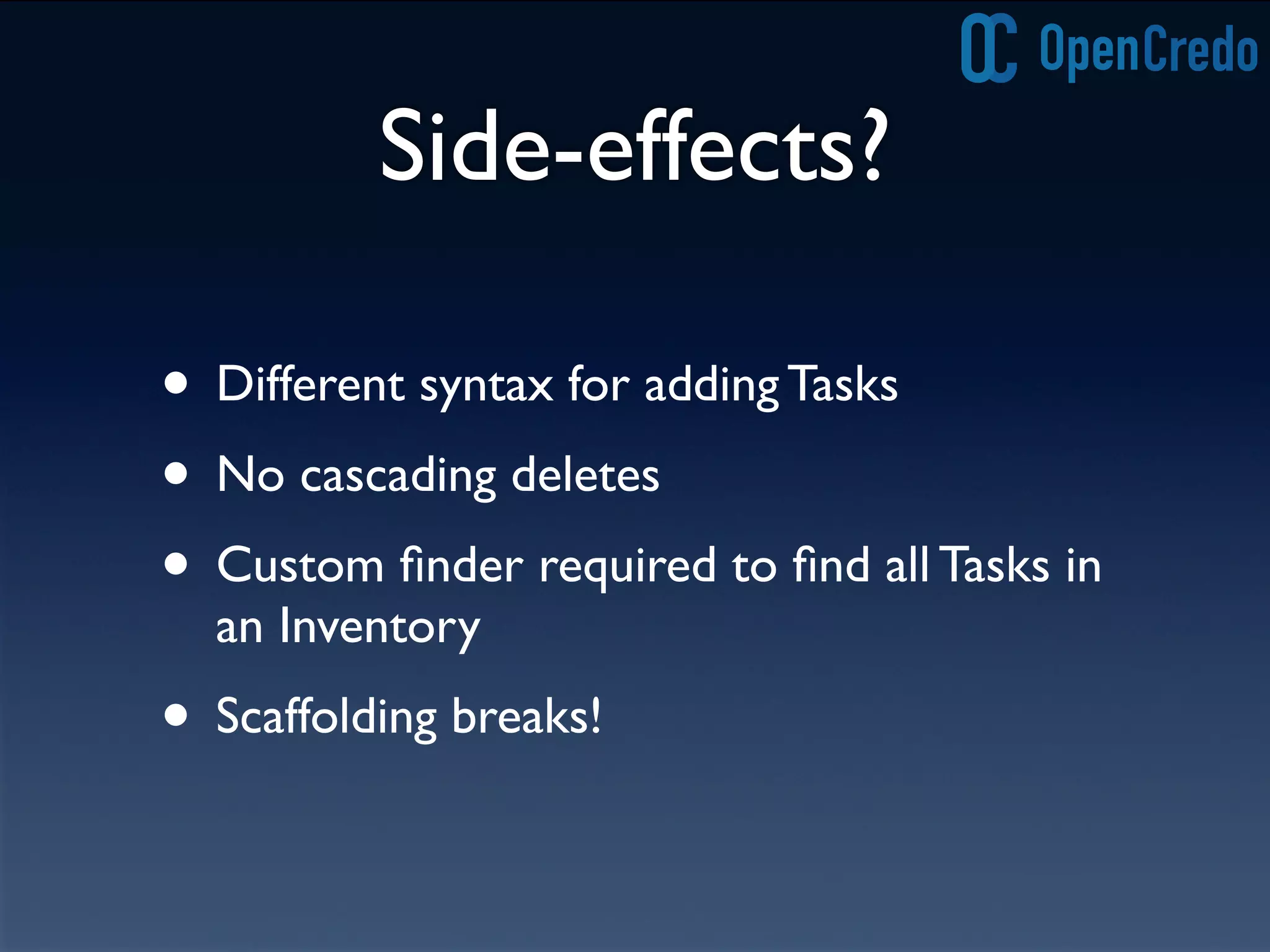
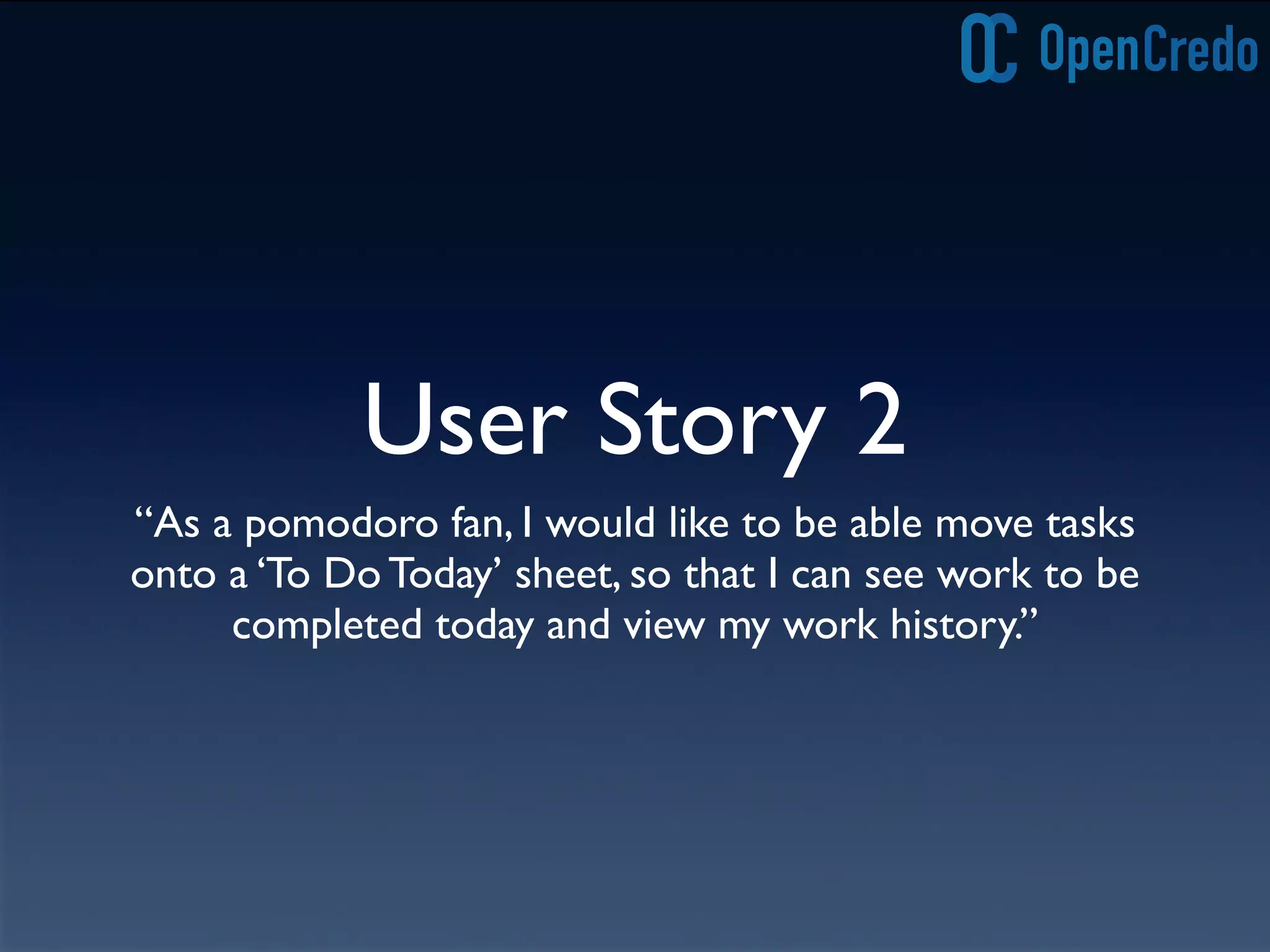
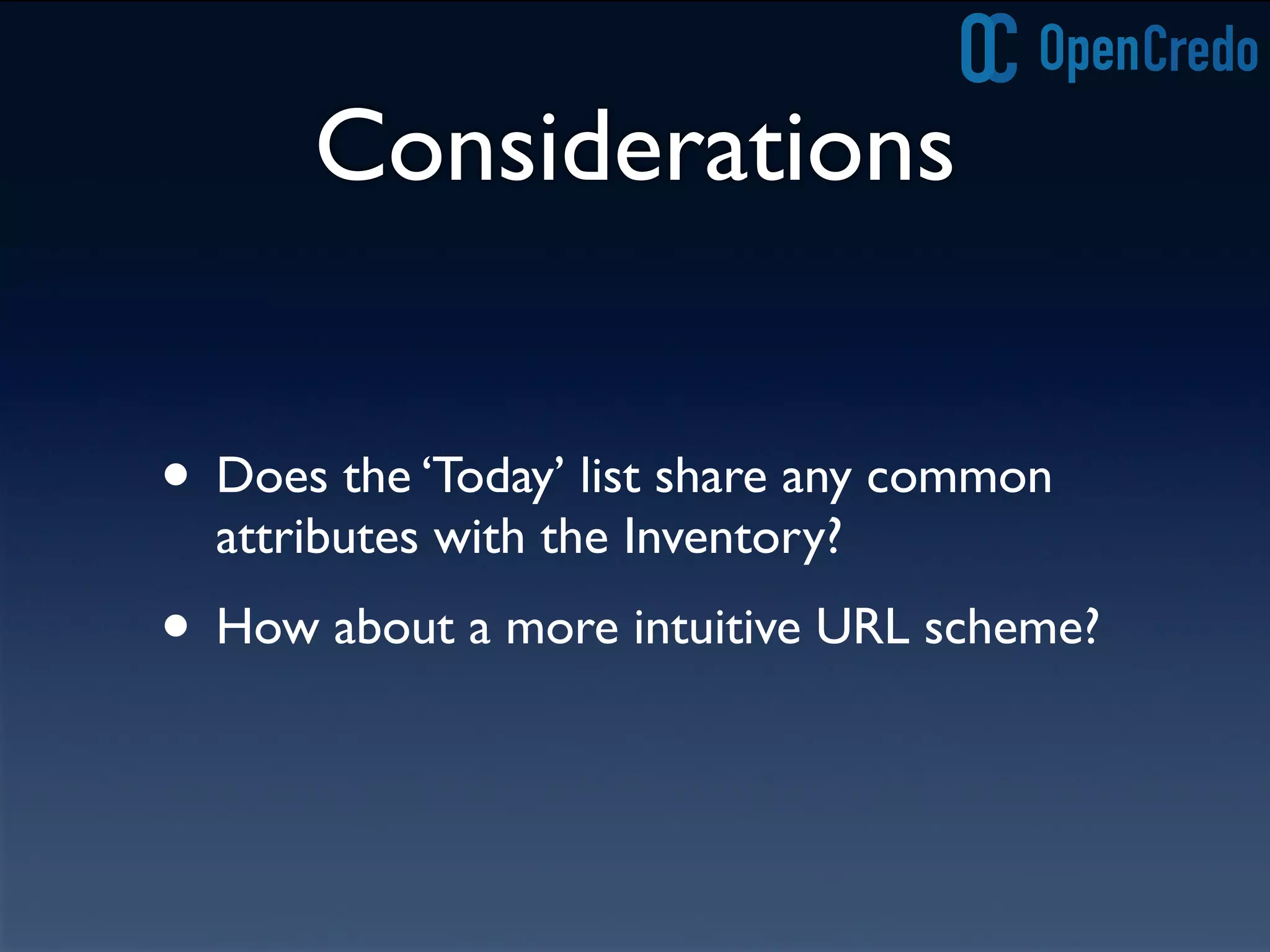
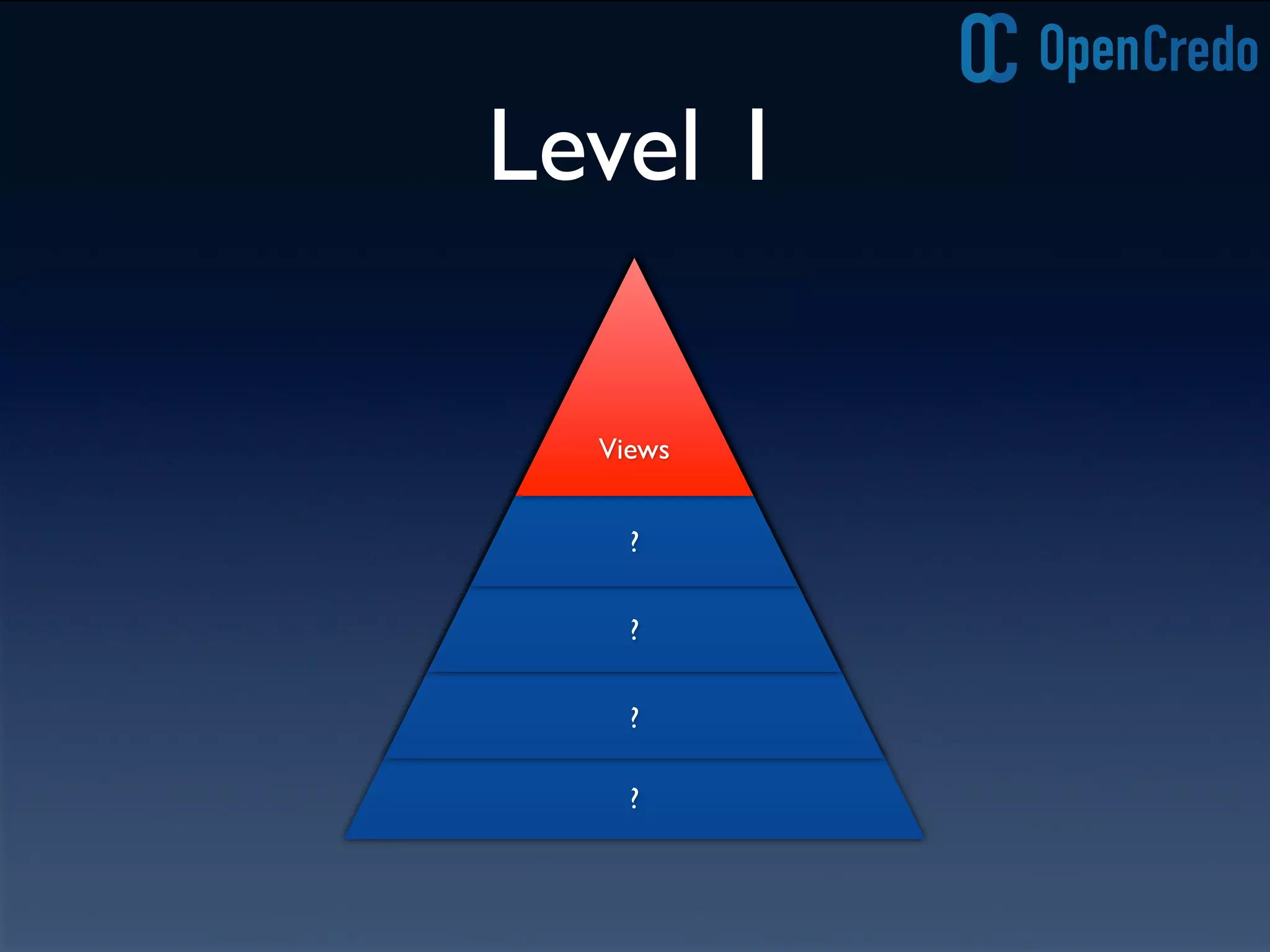
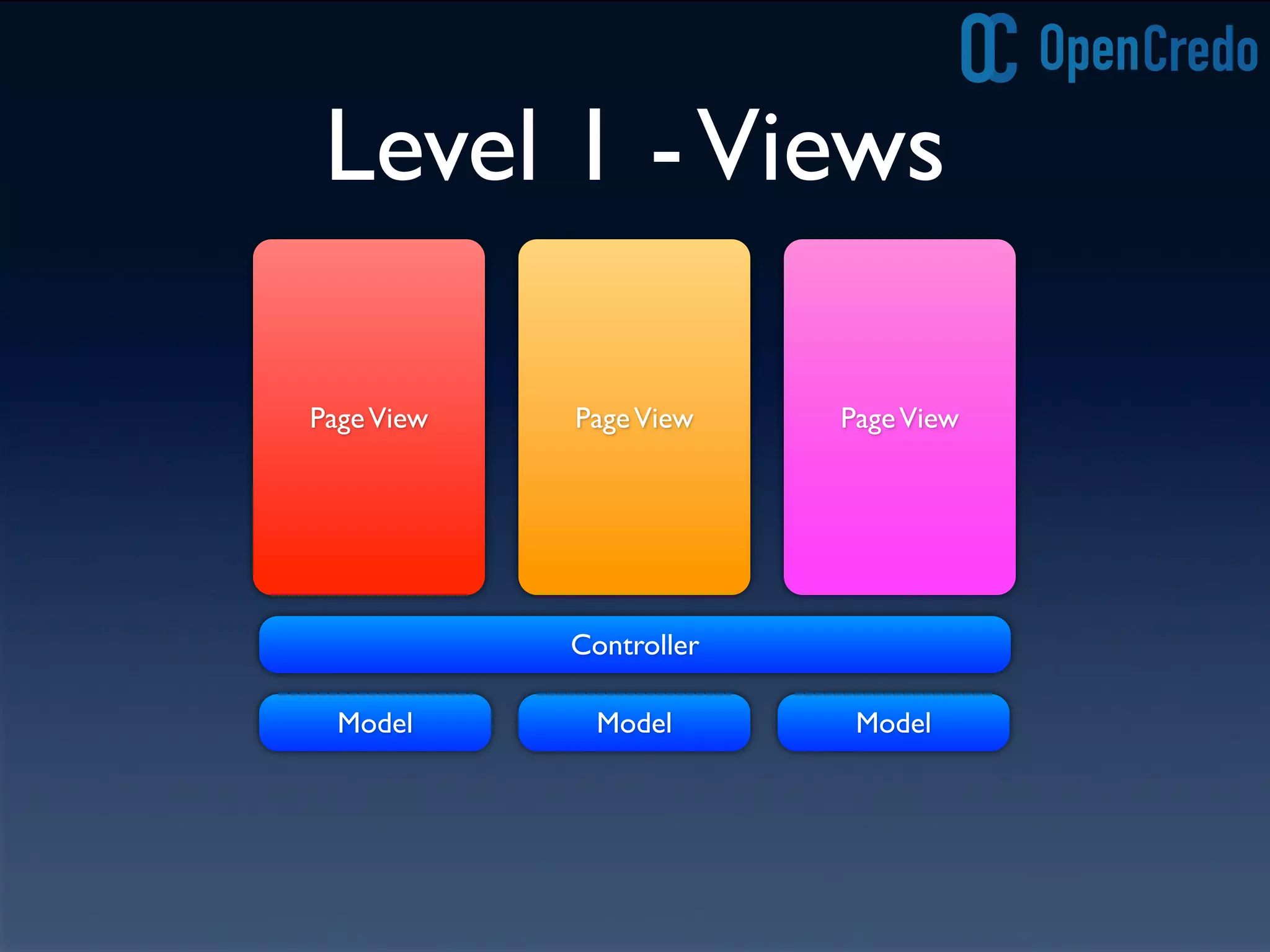
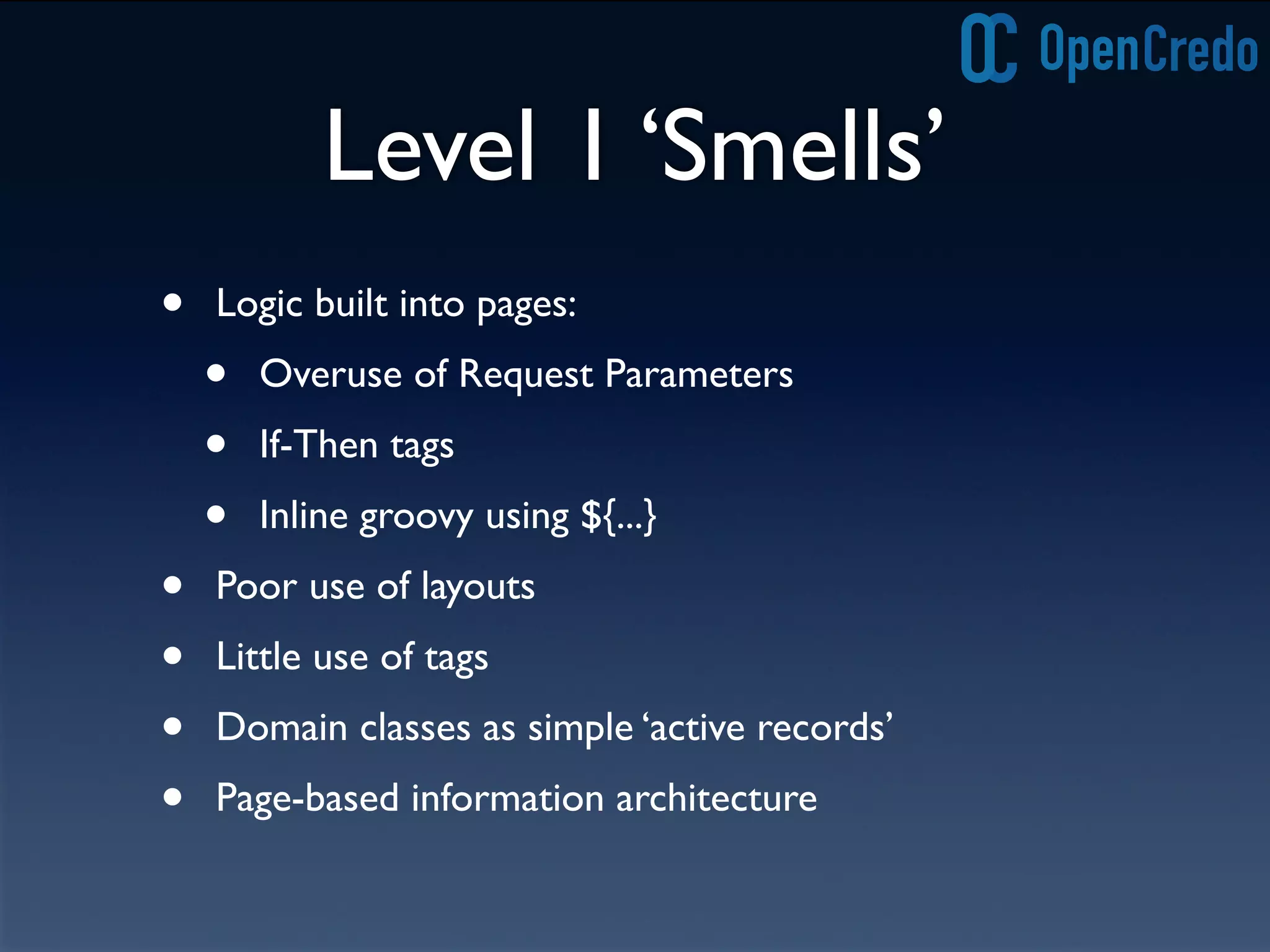
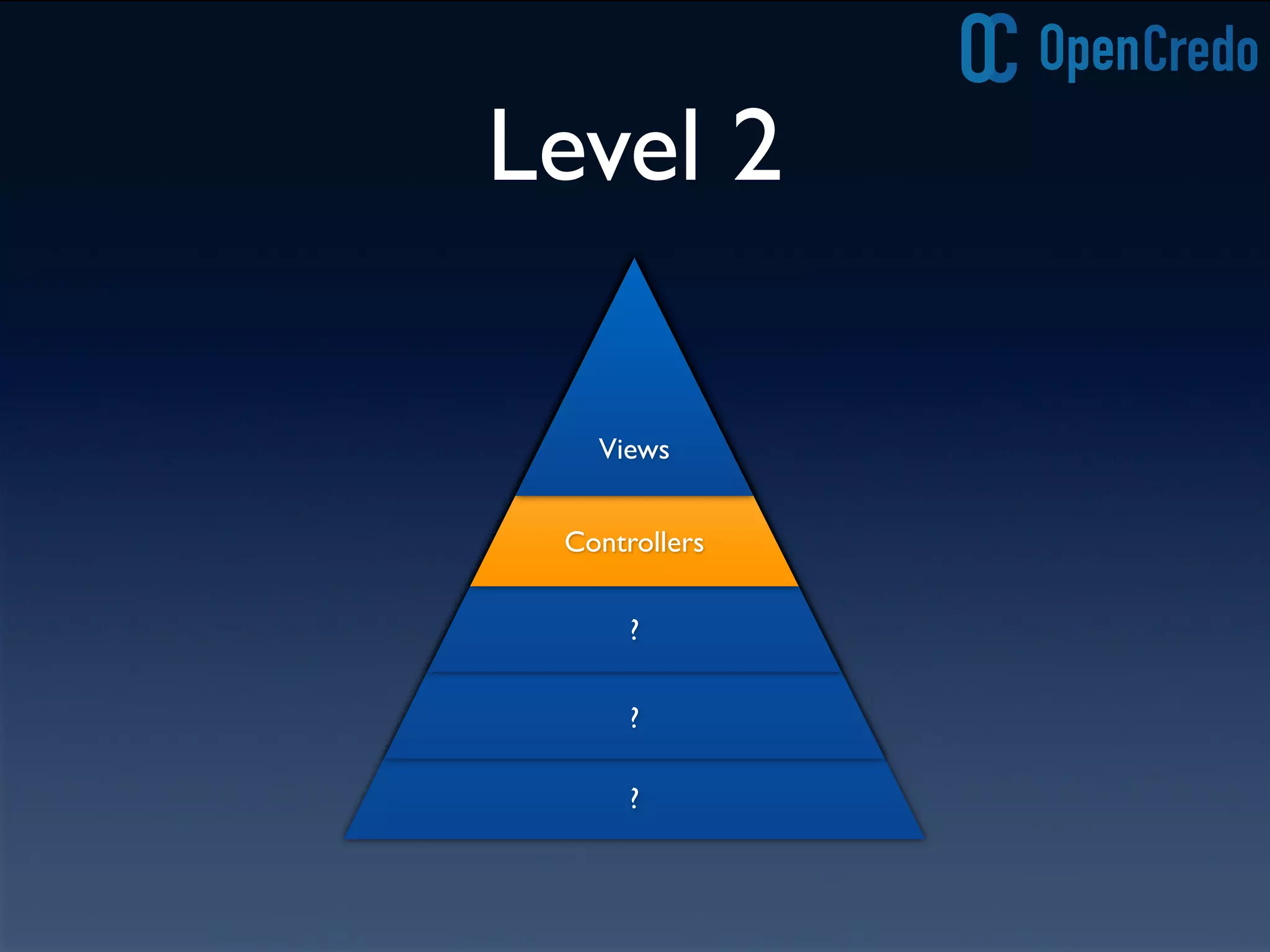
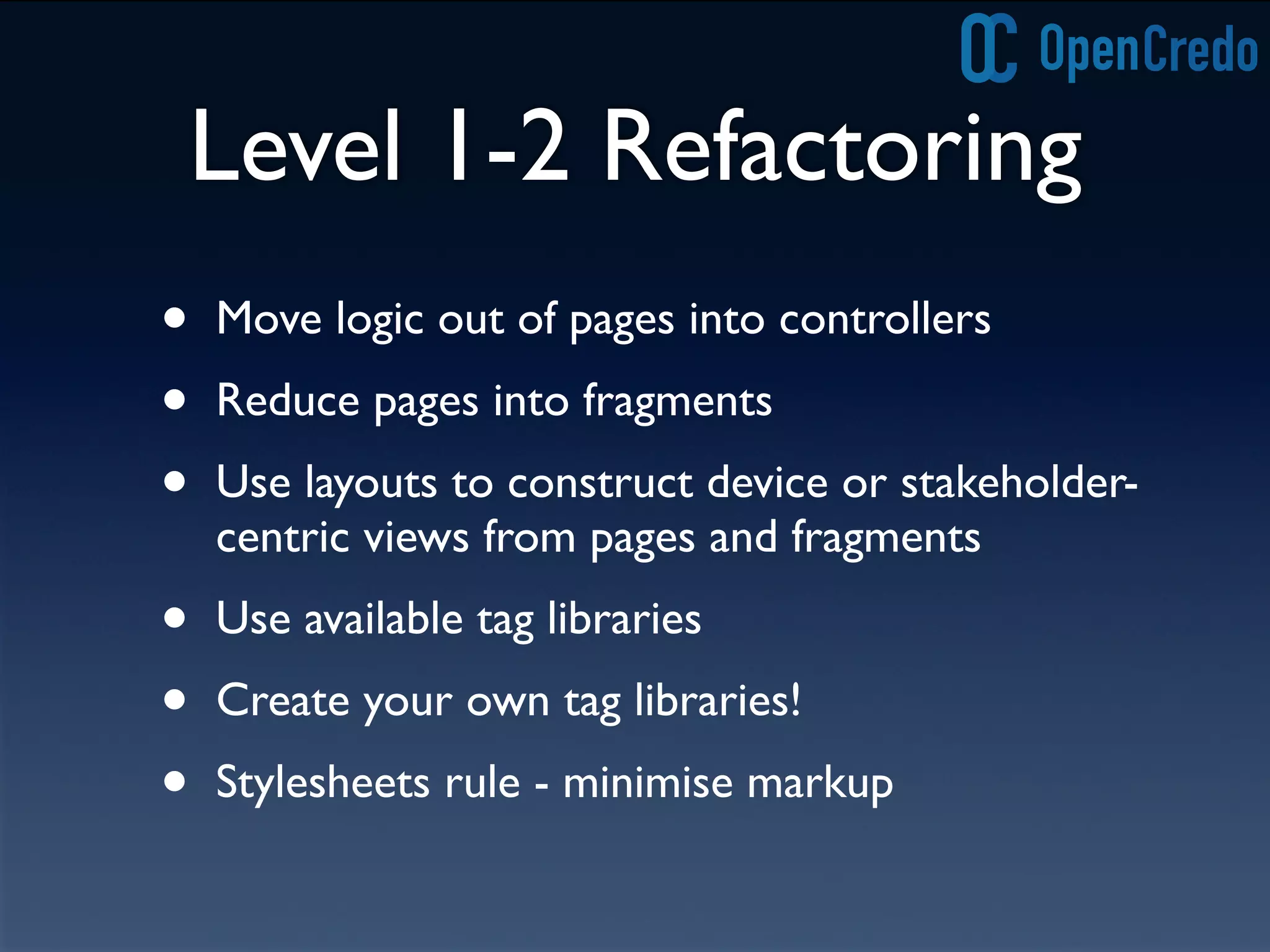
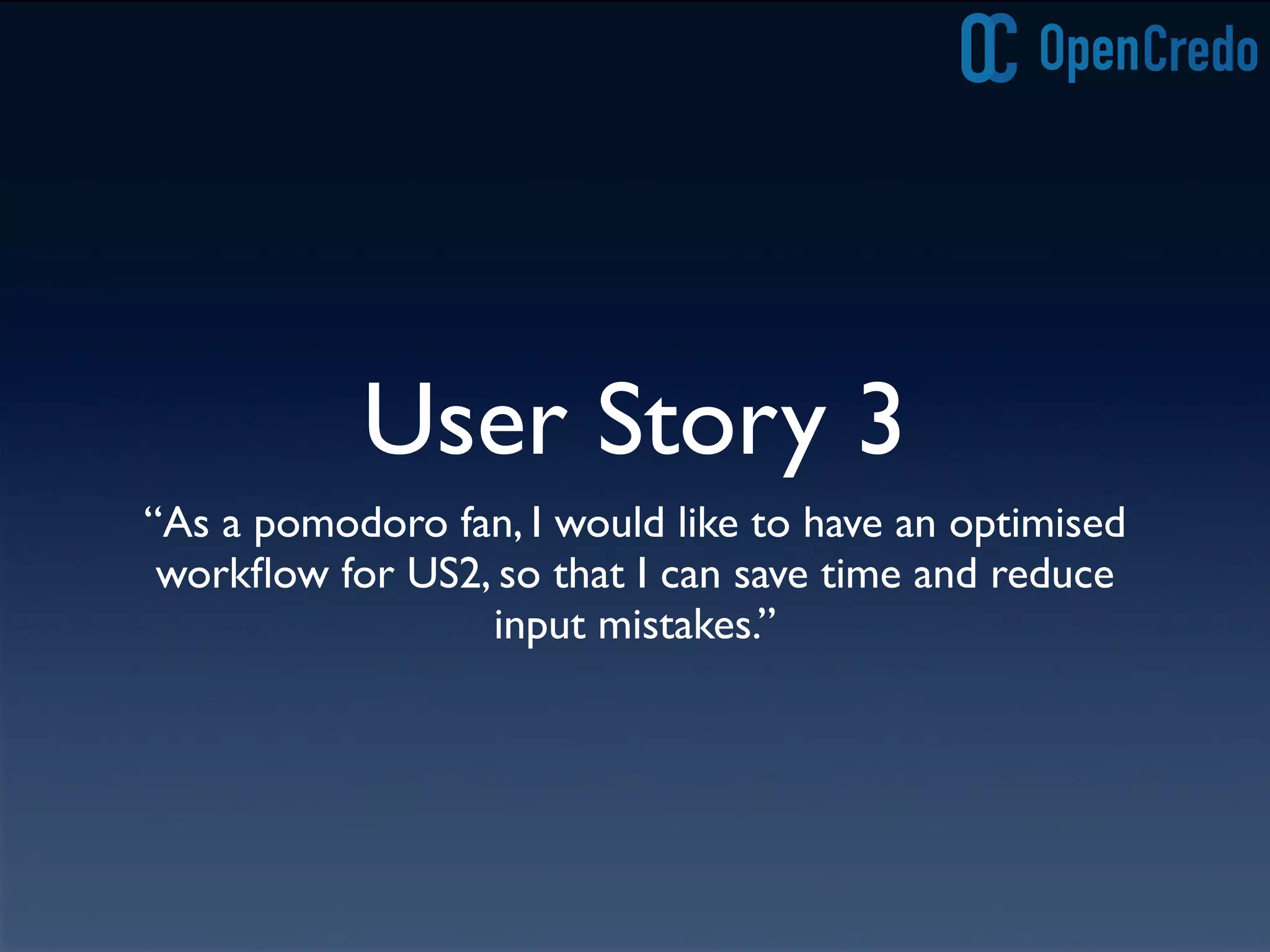
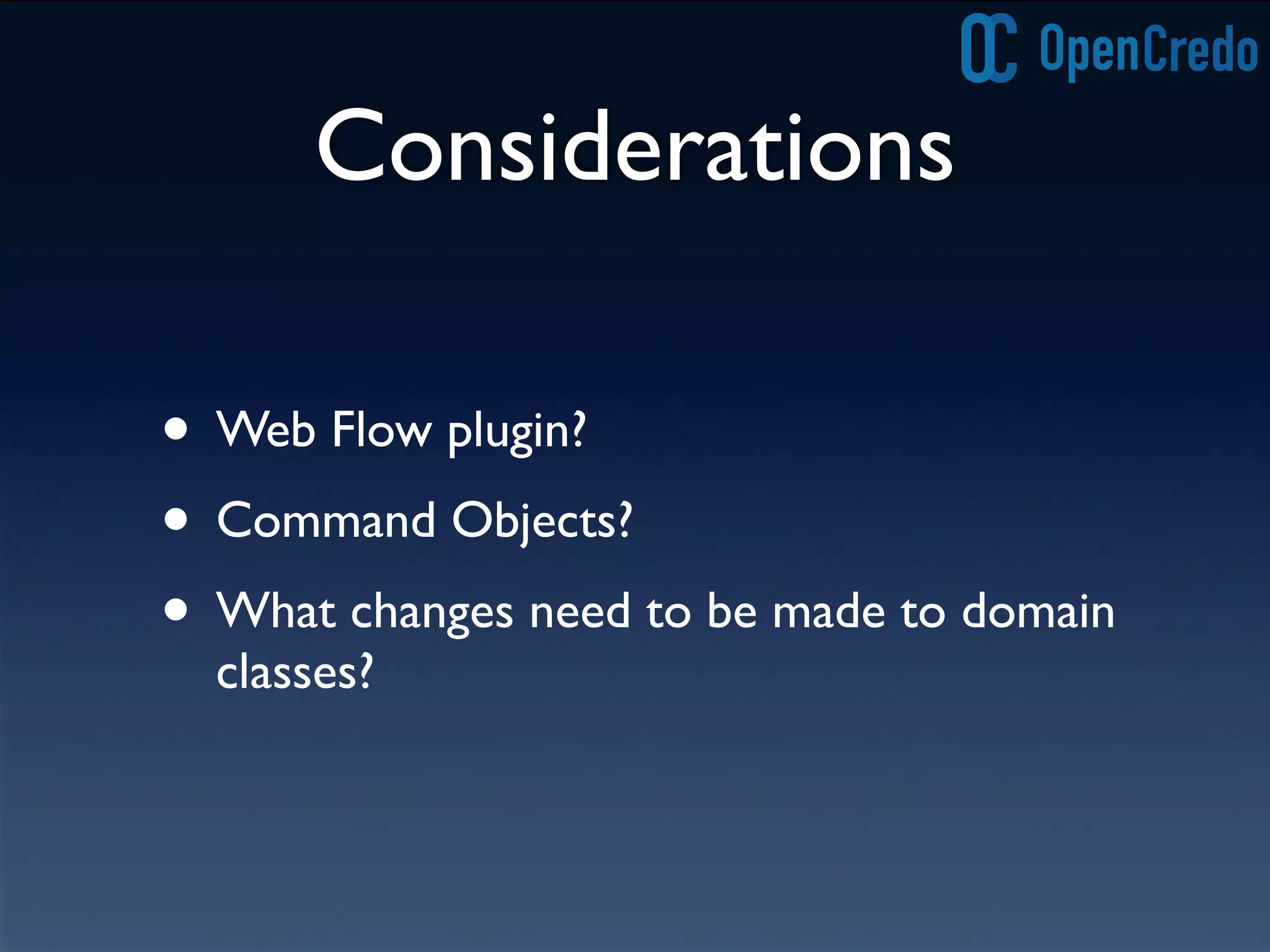
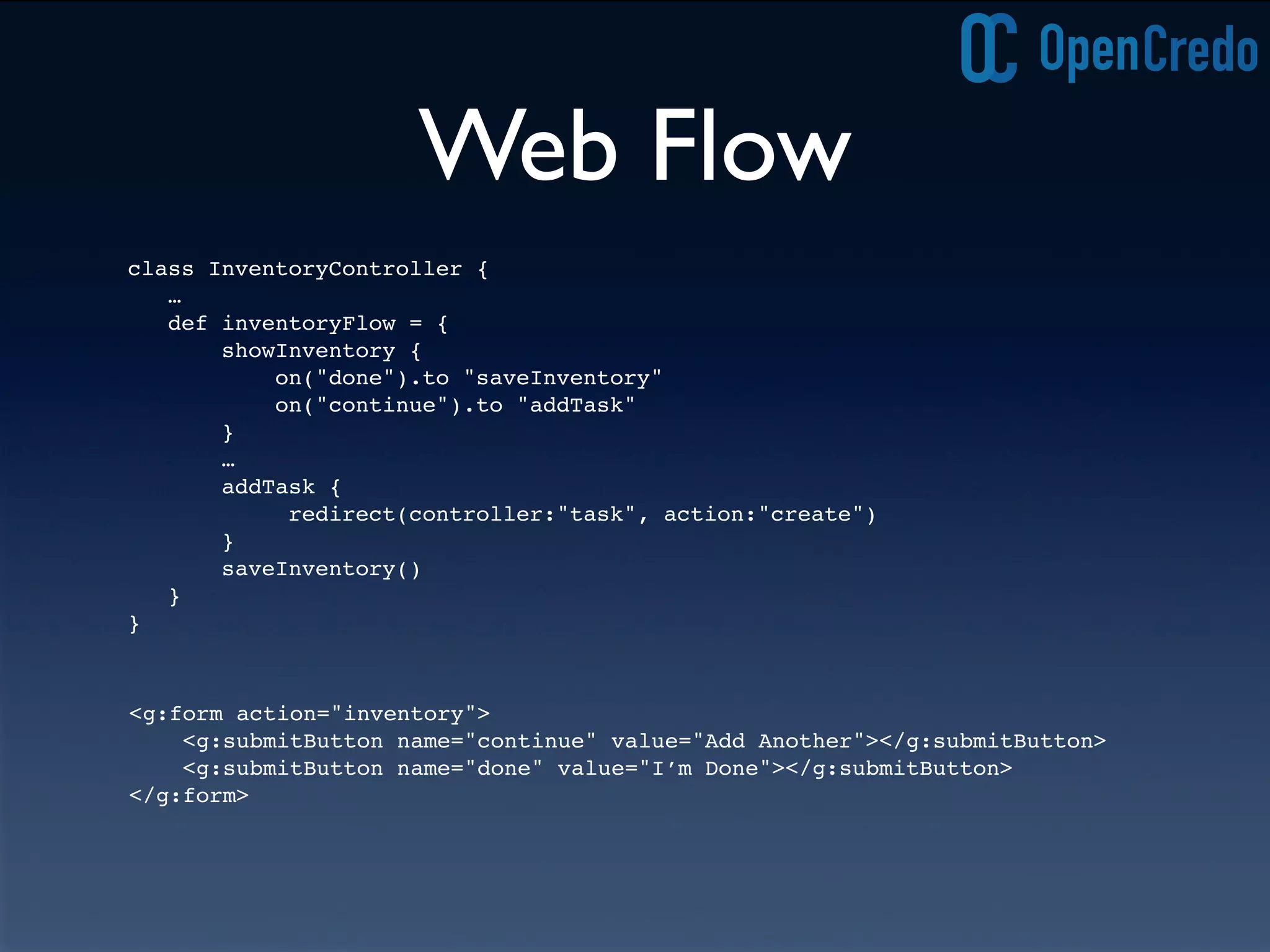
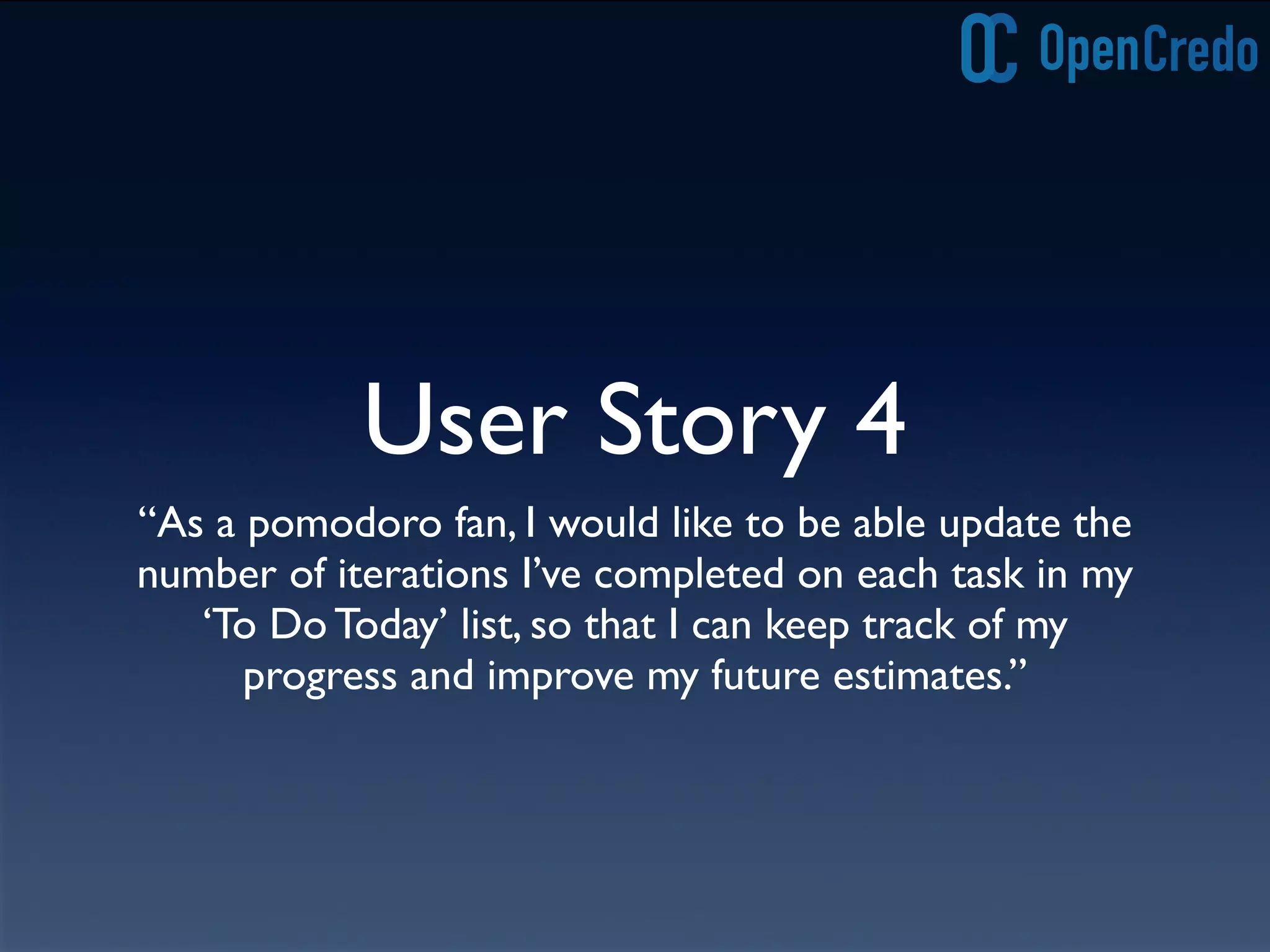
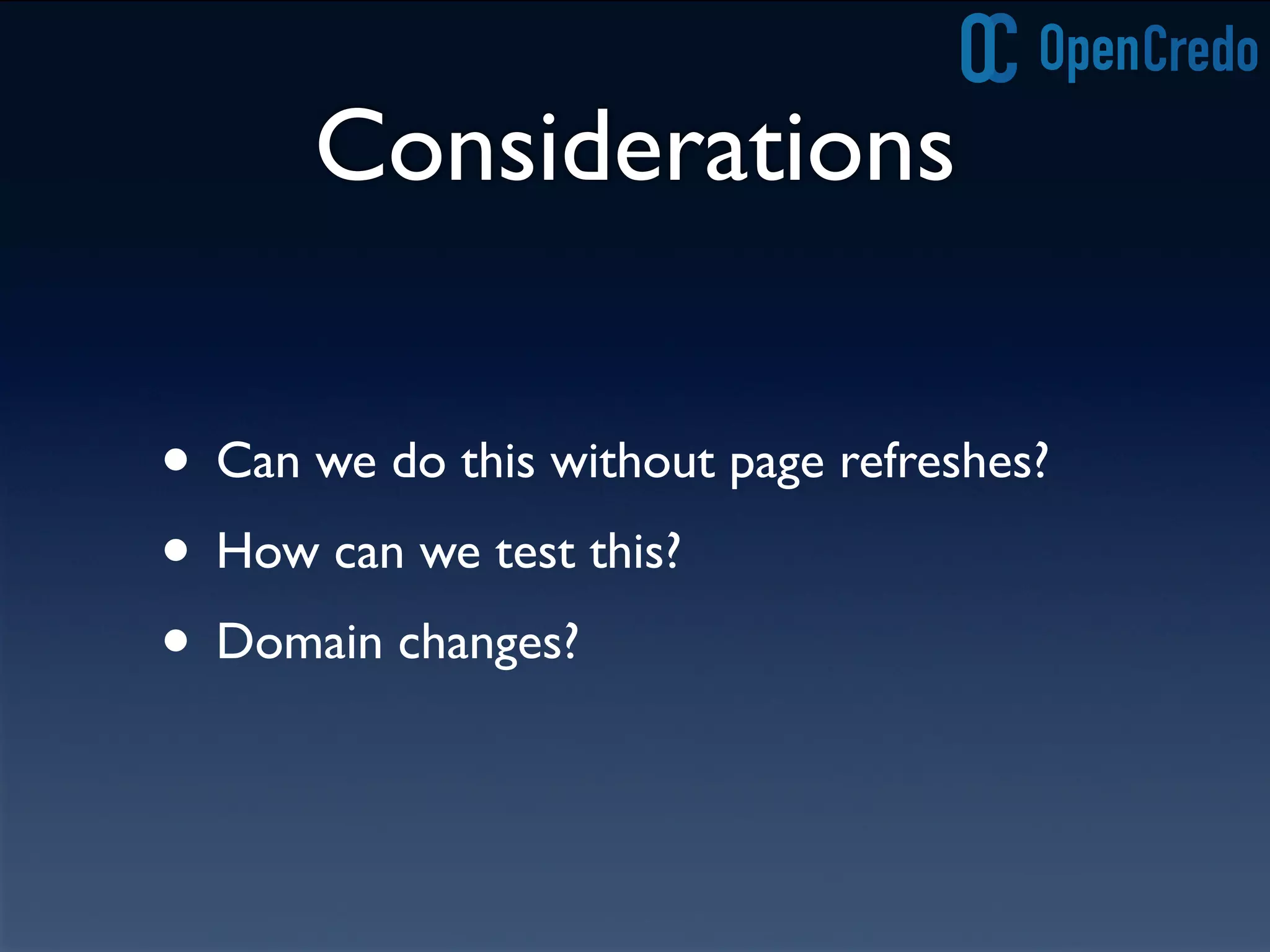
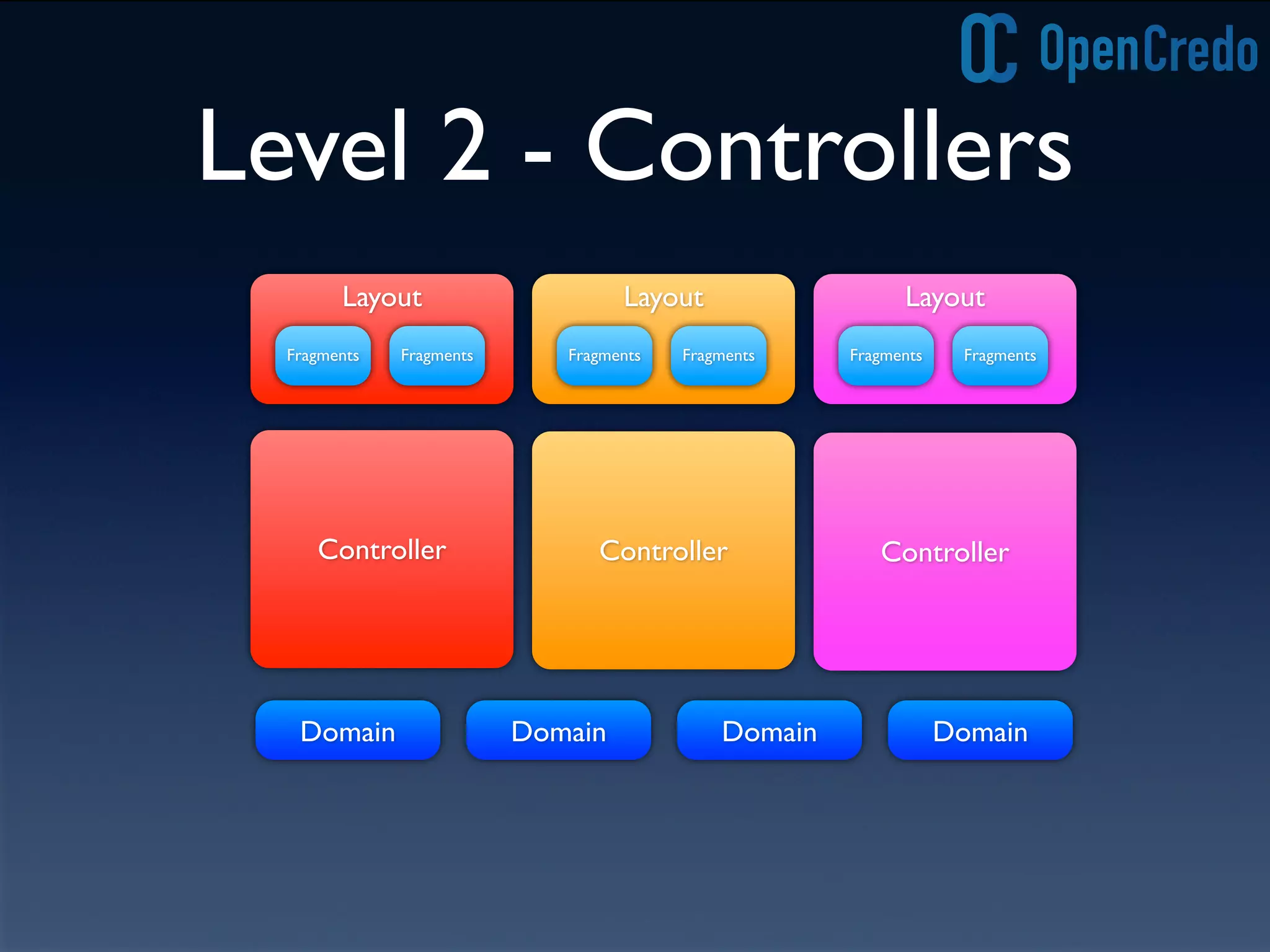
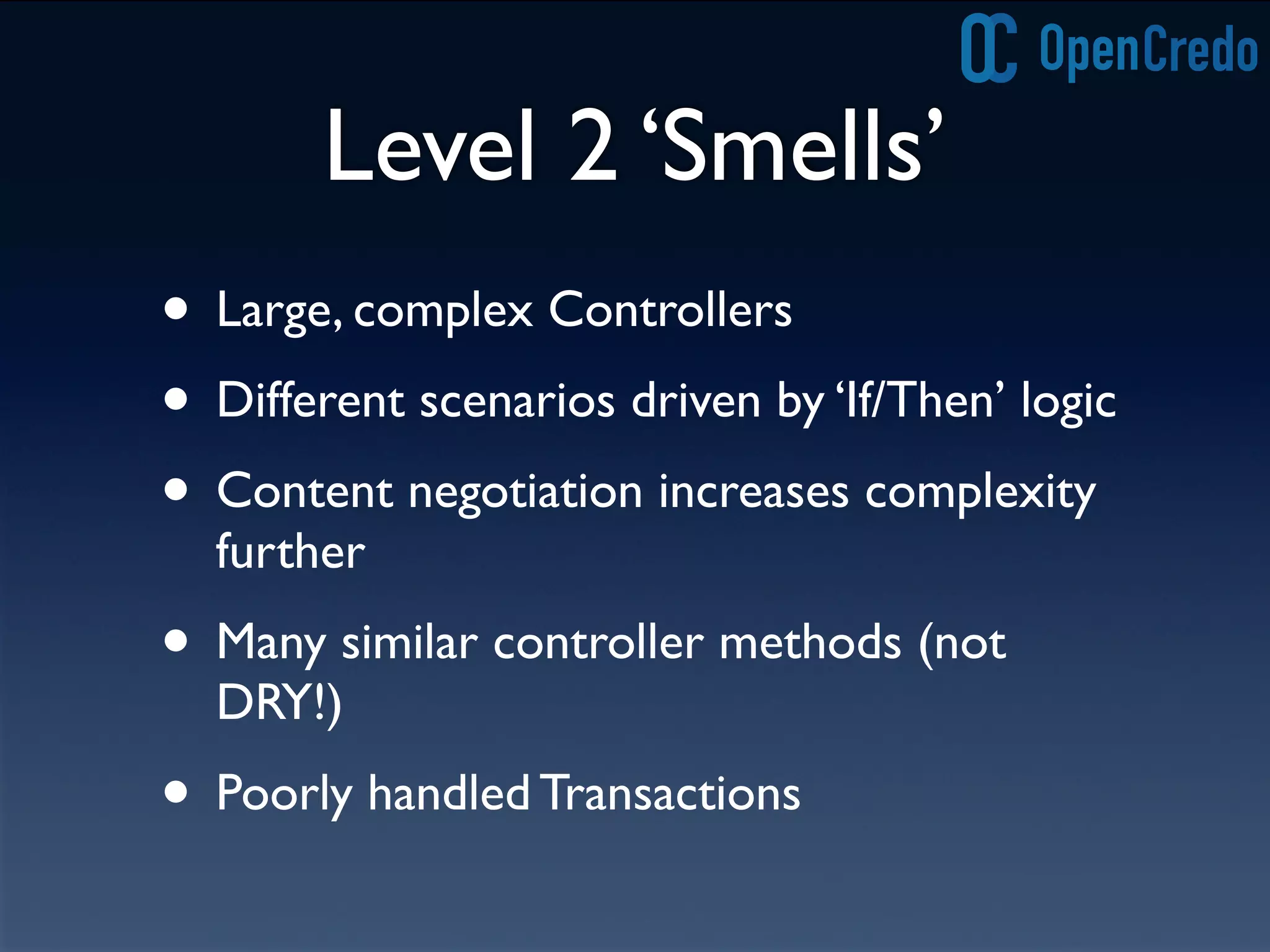
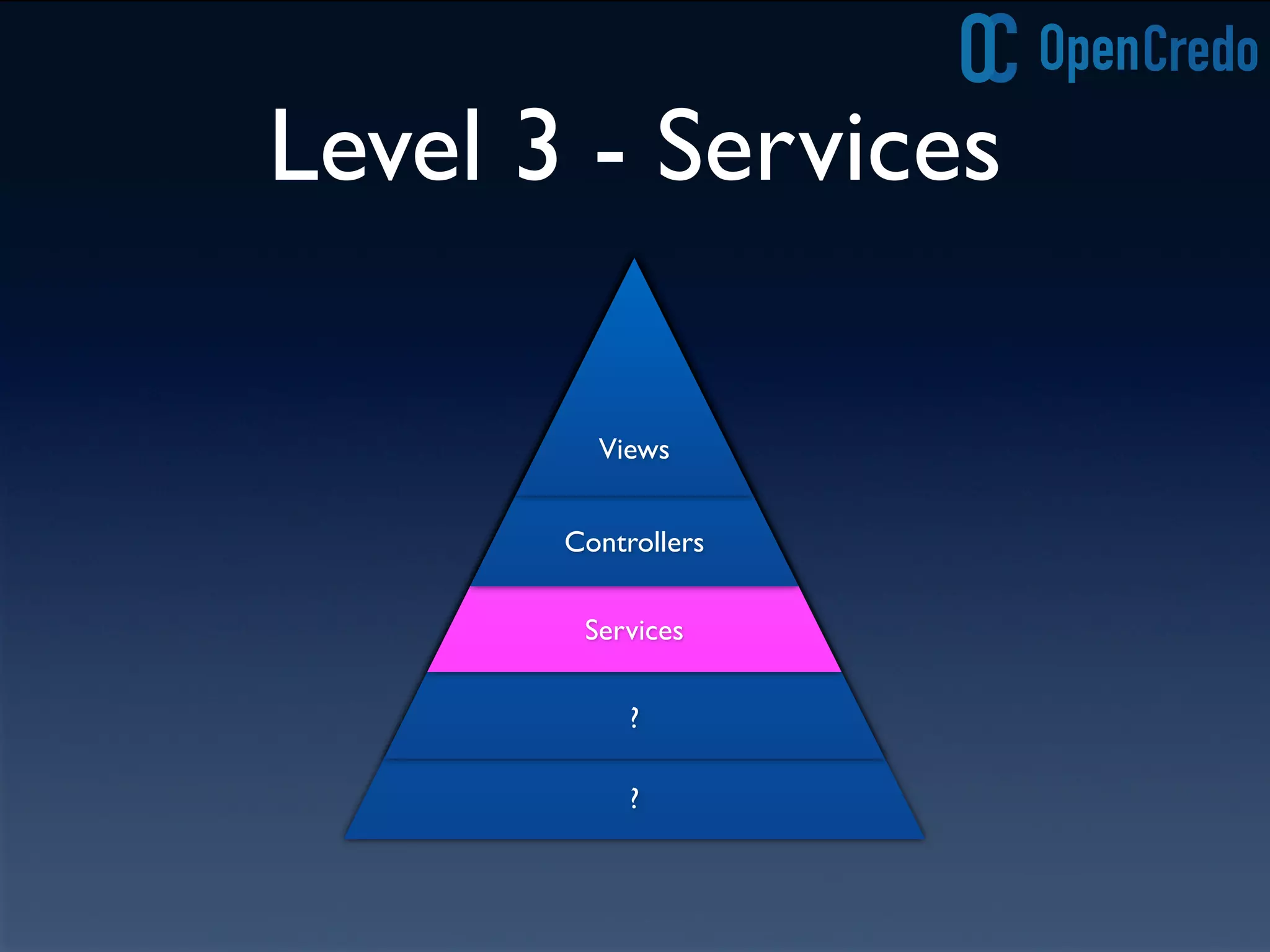
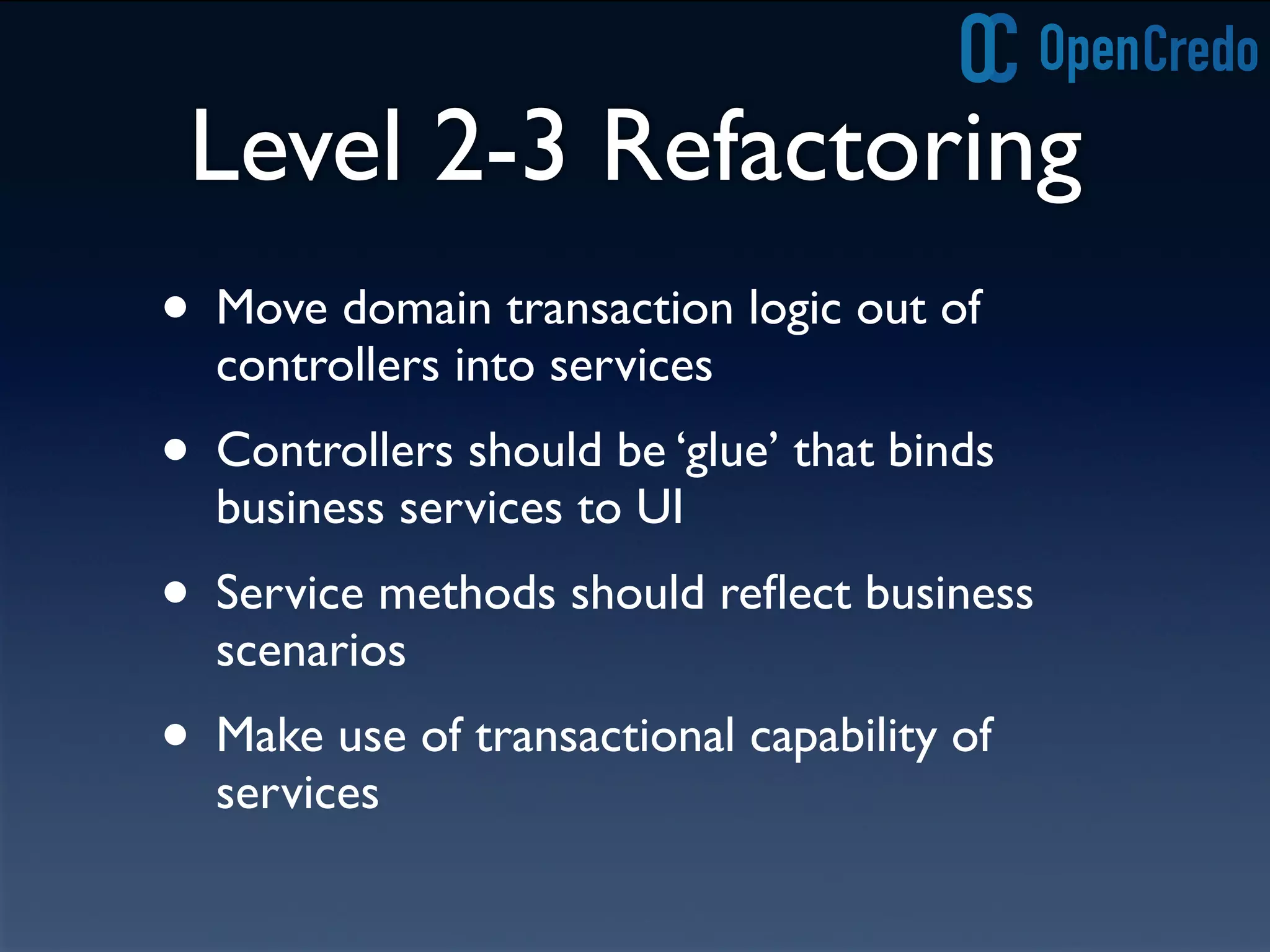
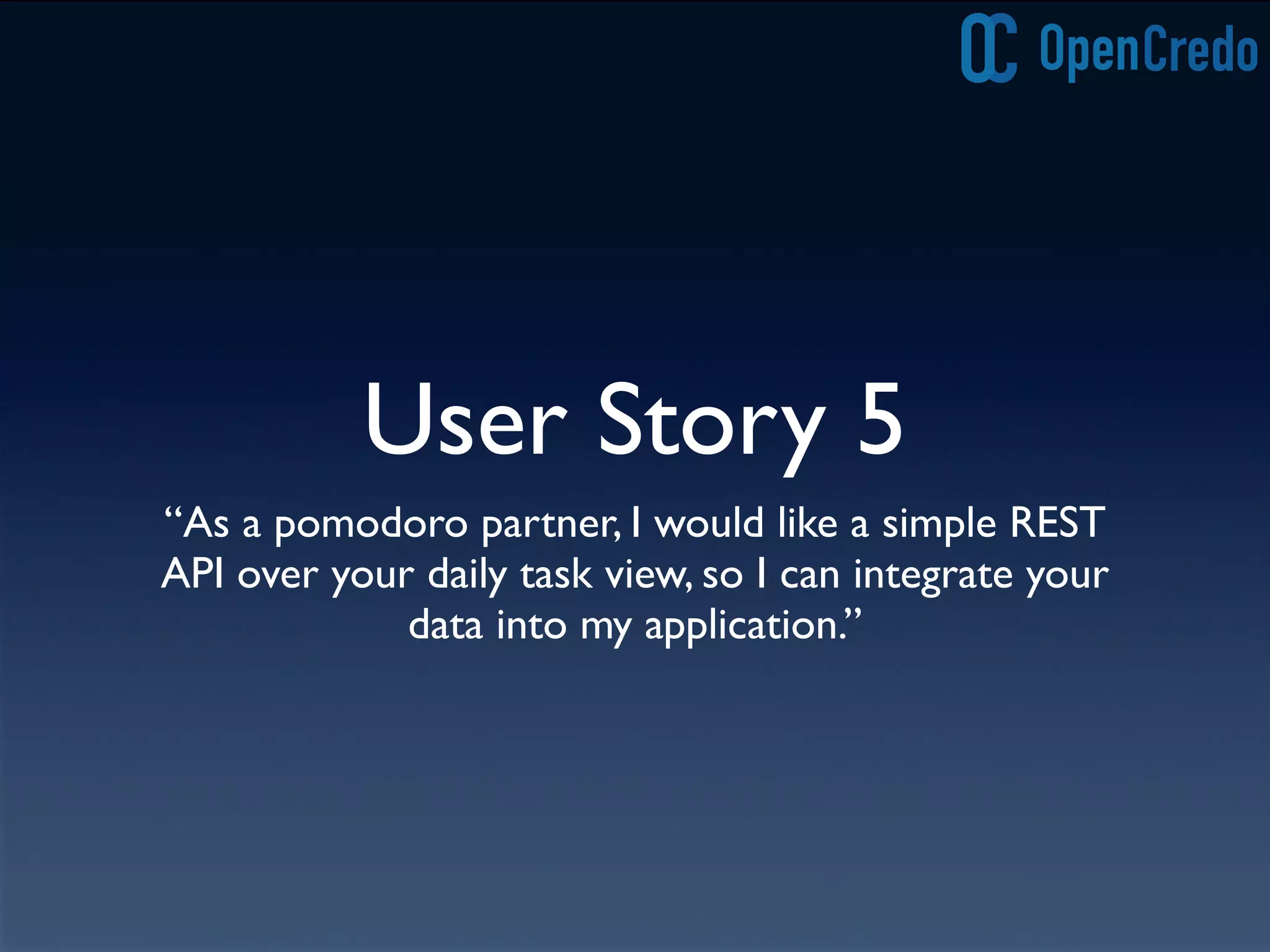
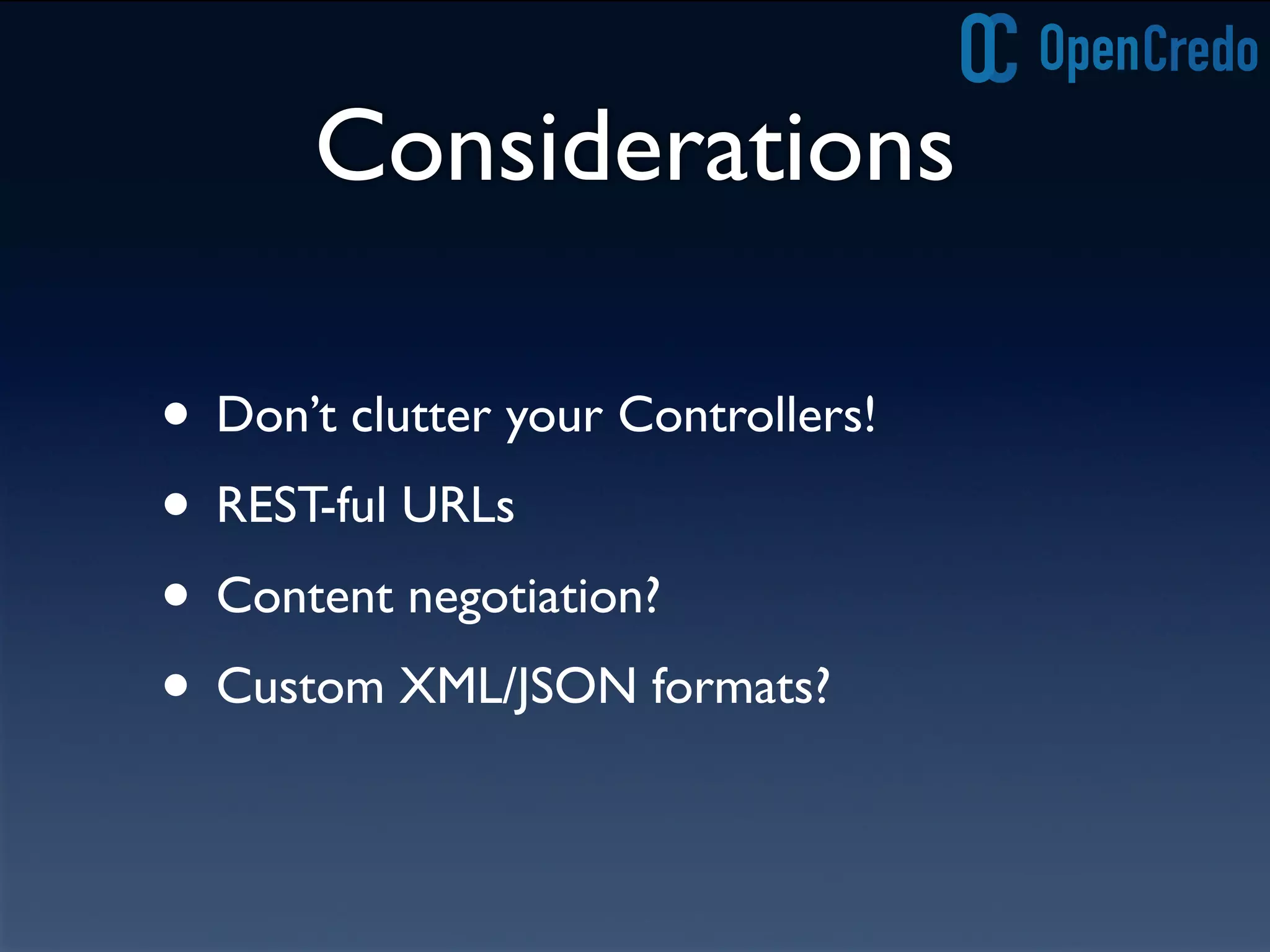
![RESTful URL Mappings
static mappings = {
"/task/$id?"(resource:"task")
}
static mappings = {
"/task/$id"(controller:"task") {
action = [GET:"show", PUT:"update", DELETE:"delete", POST:"save"]
}
}
static mappings = {
"/task/$id"(controller:"task", parseRequest:true) {
action = [GET:"show", PUT:"update", DELETE:"delete", POST:"save"]
}
}](https://image.slidesharecdn.com/grailspatternsandpractices-130726073609-phpapp02/75/Grails-patterns-and-practices-34-2048.jpg)
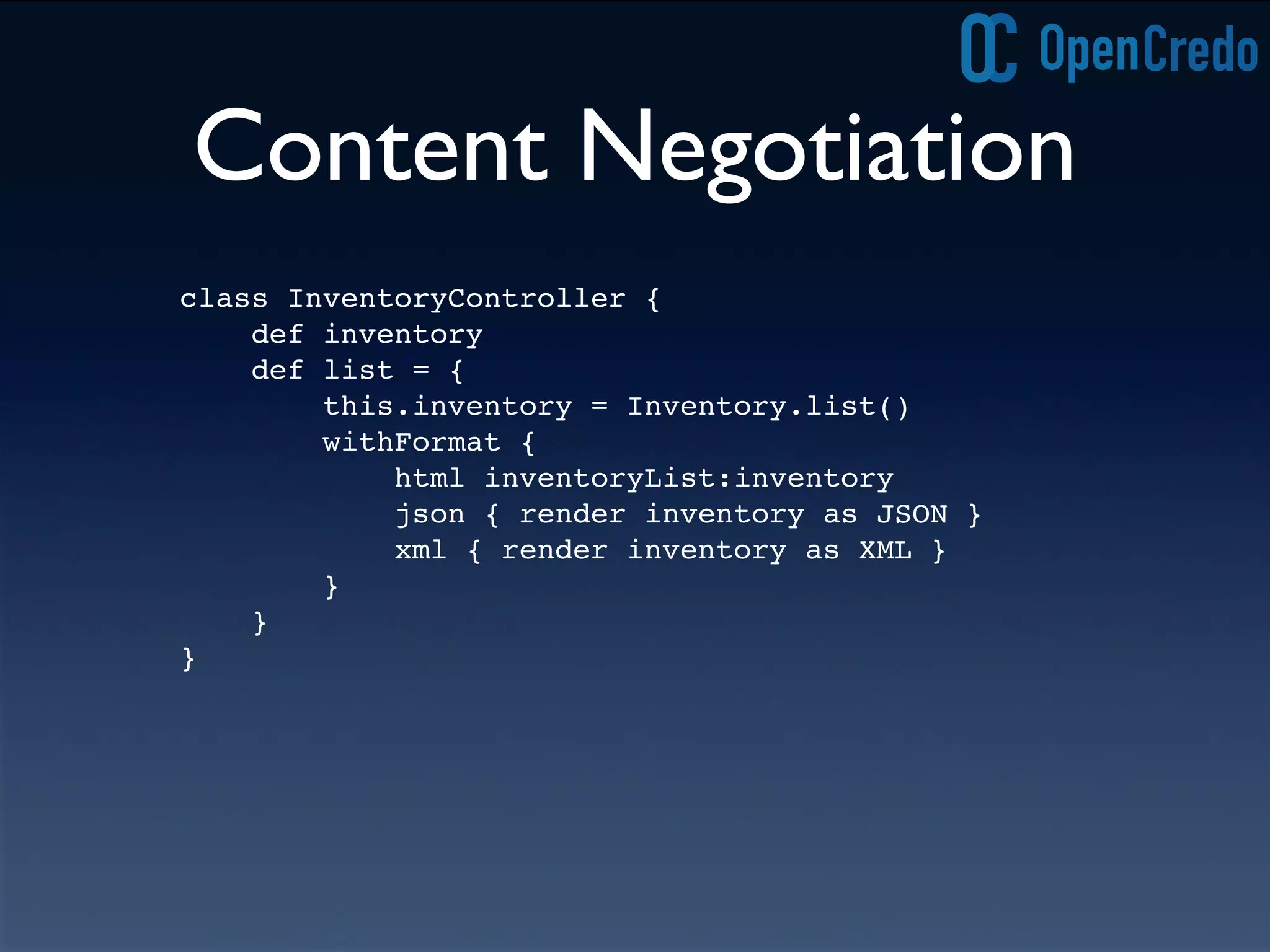
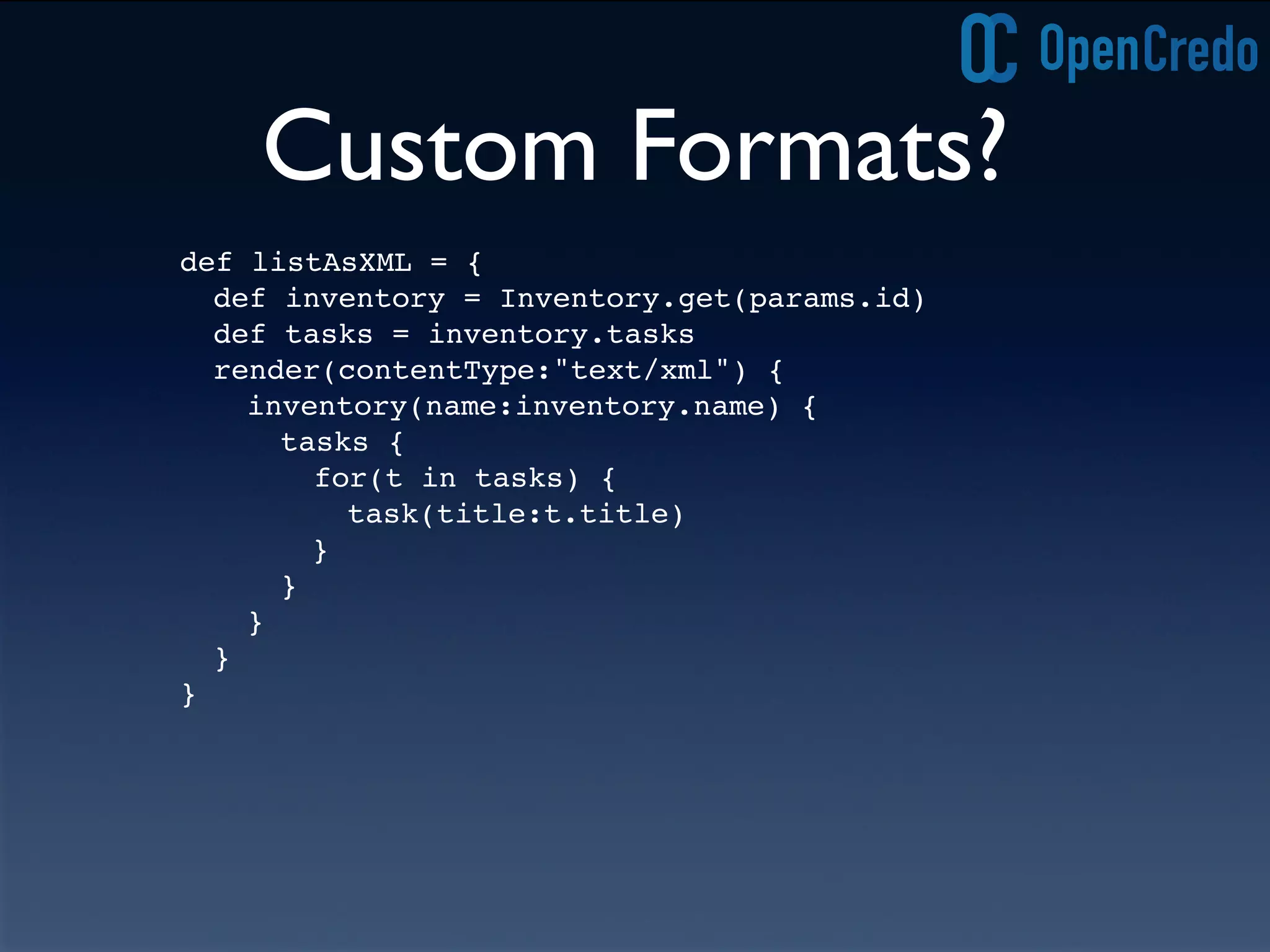
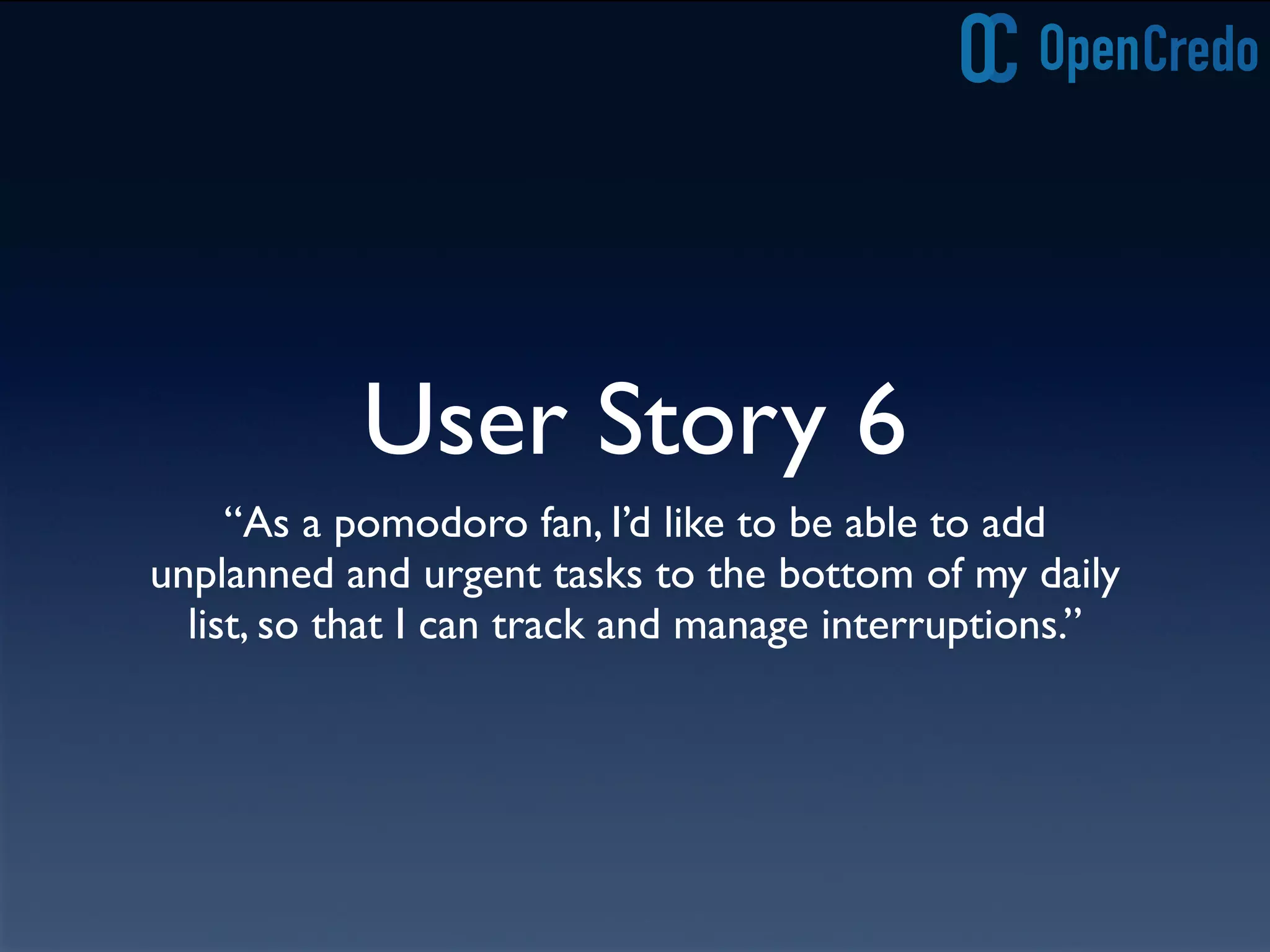
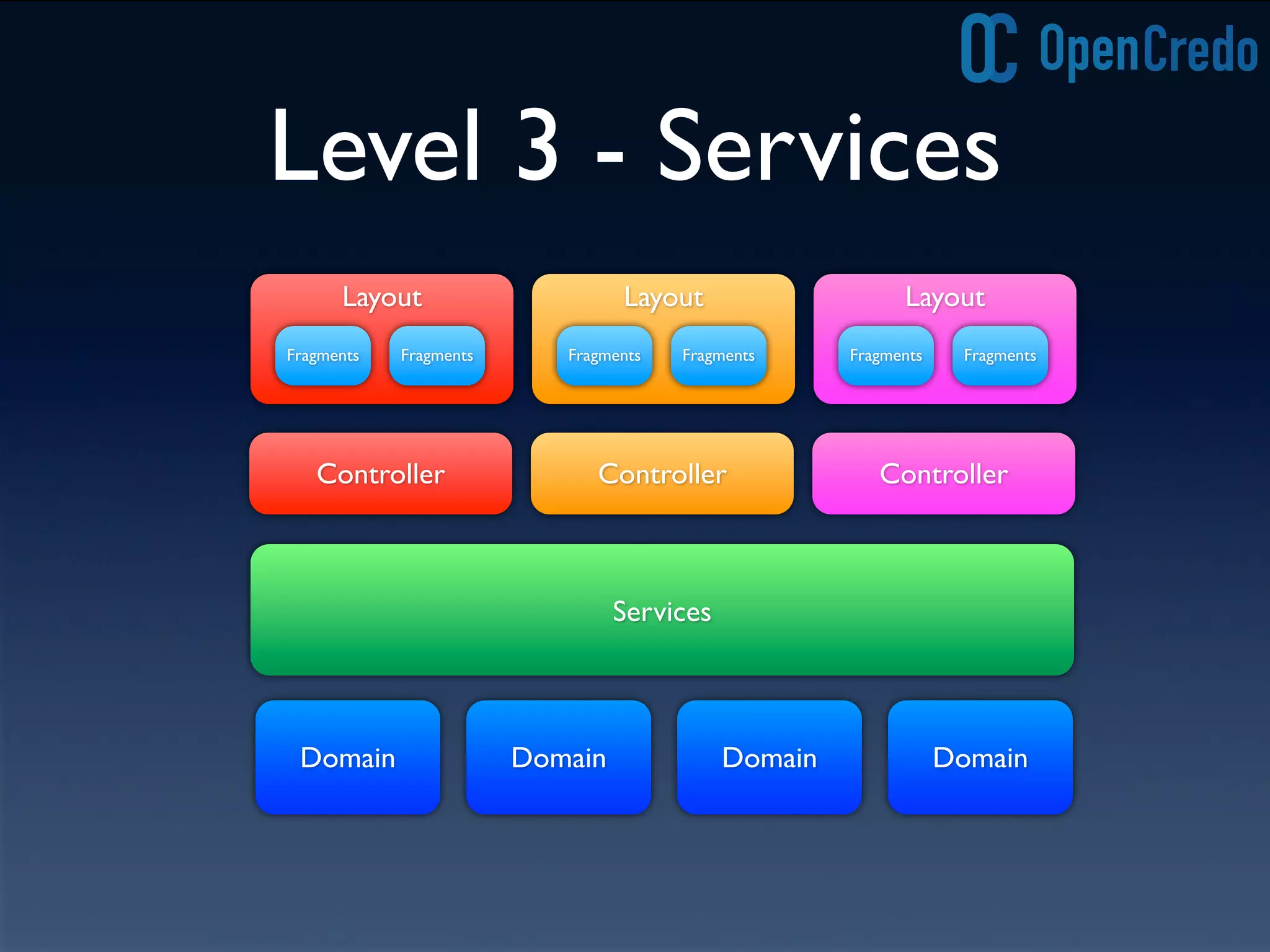
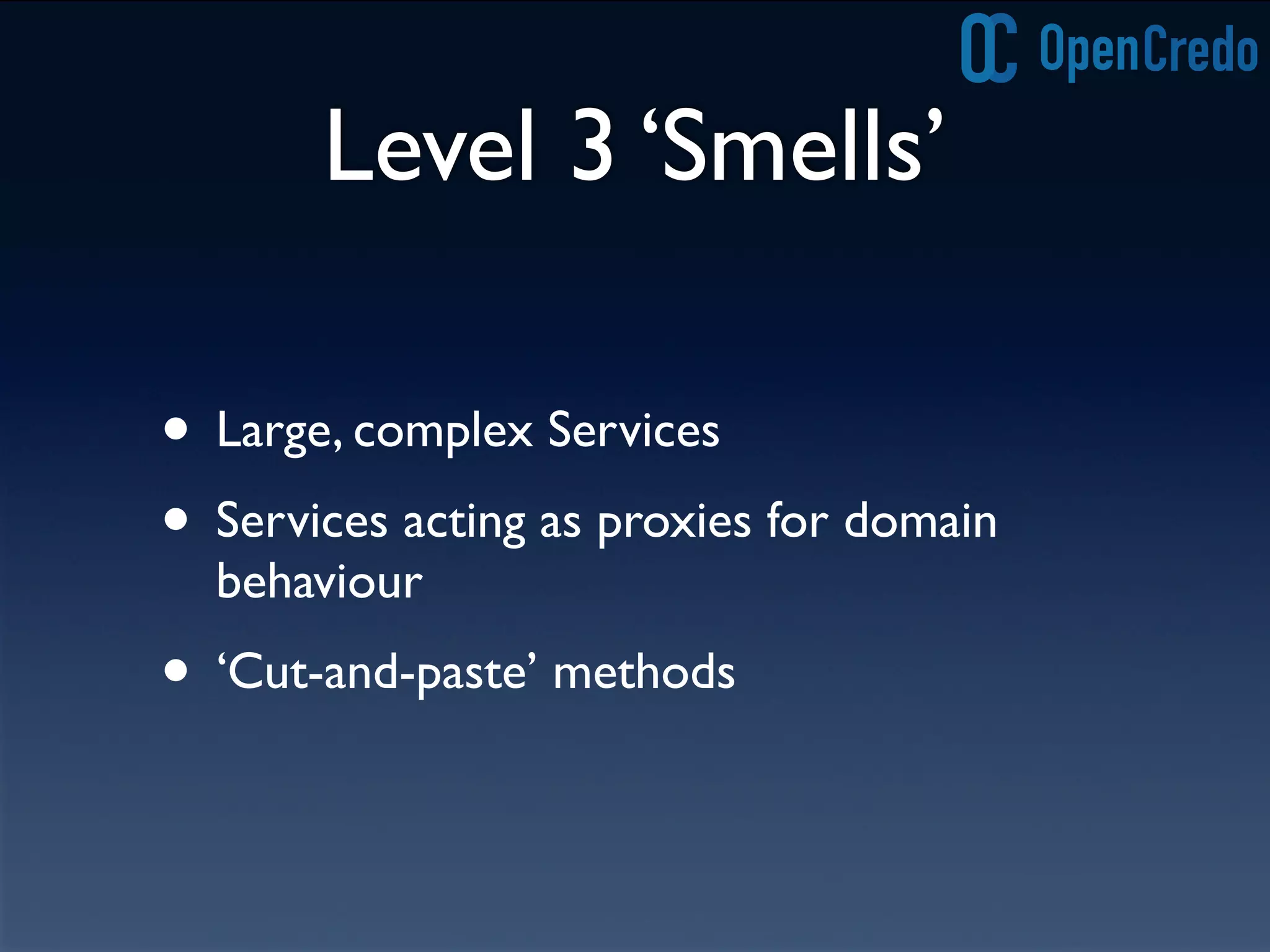
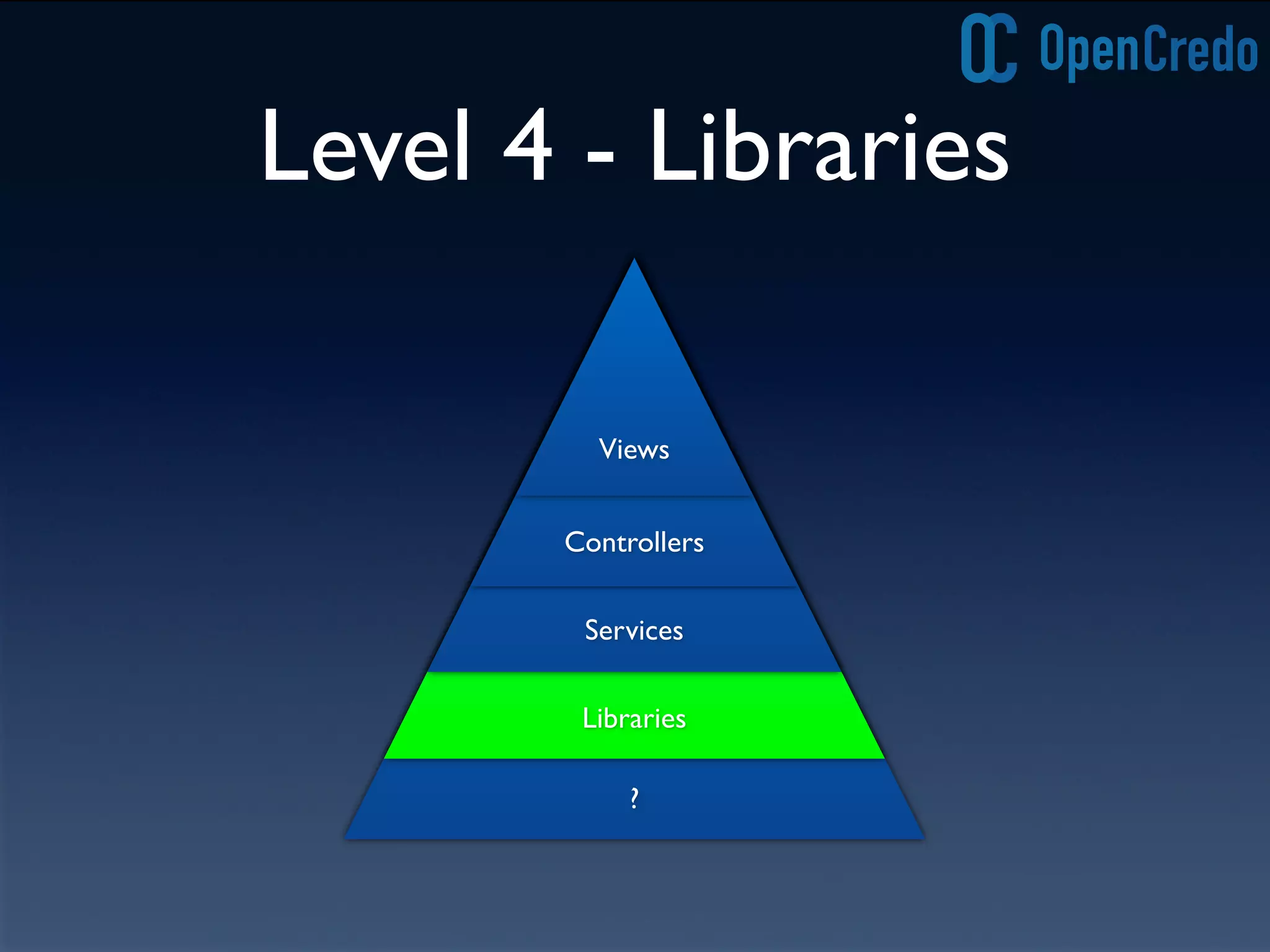
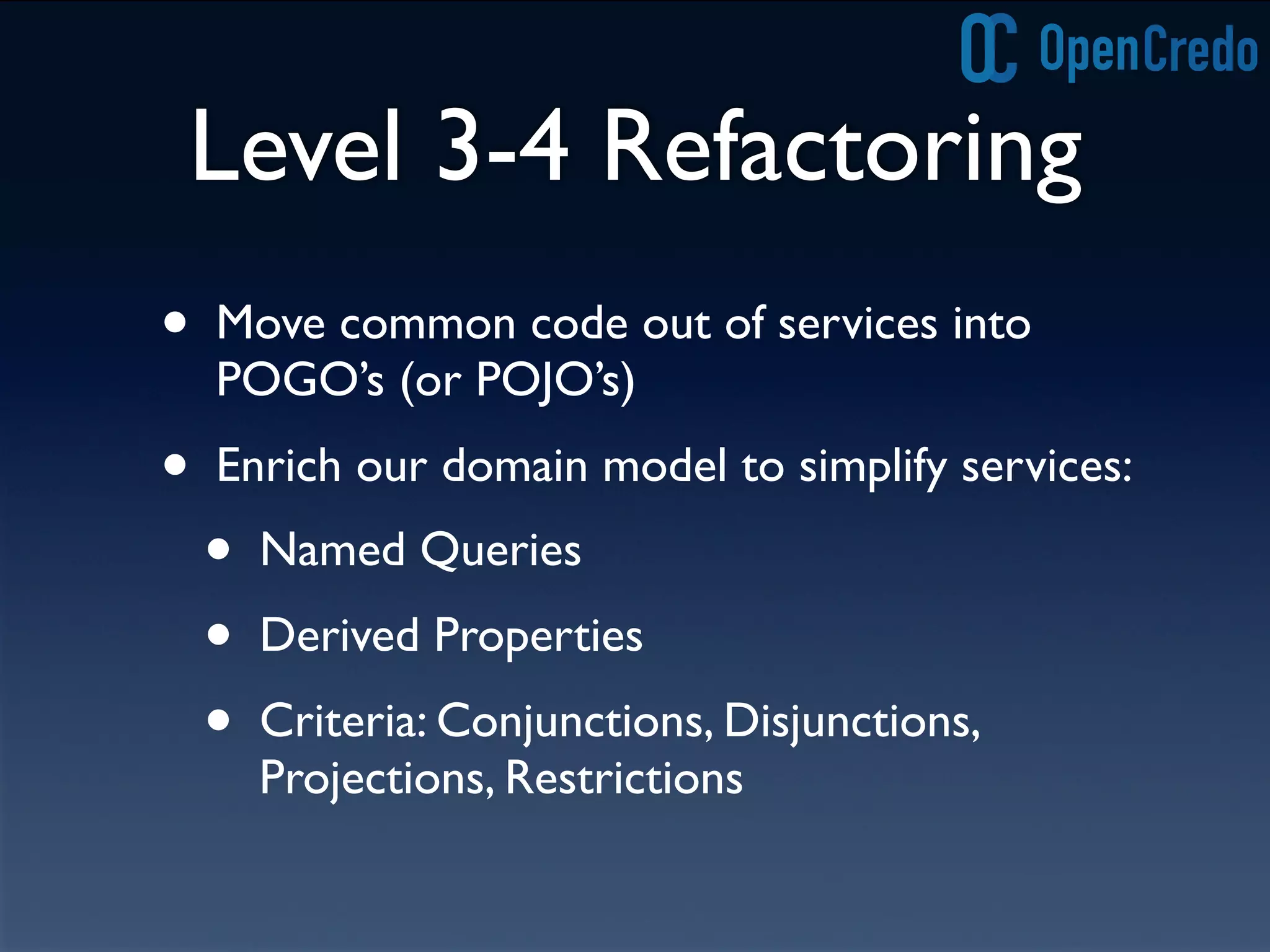
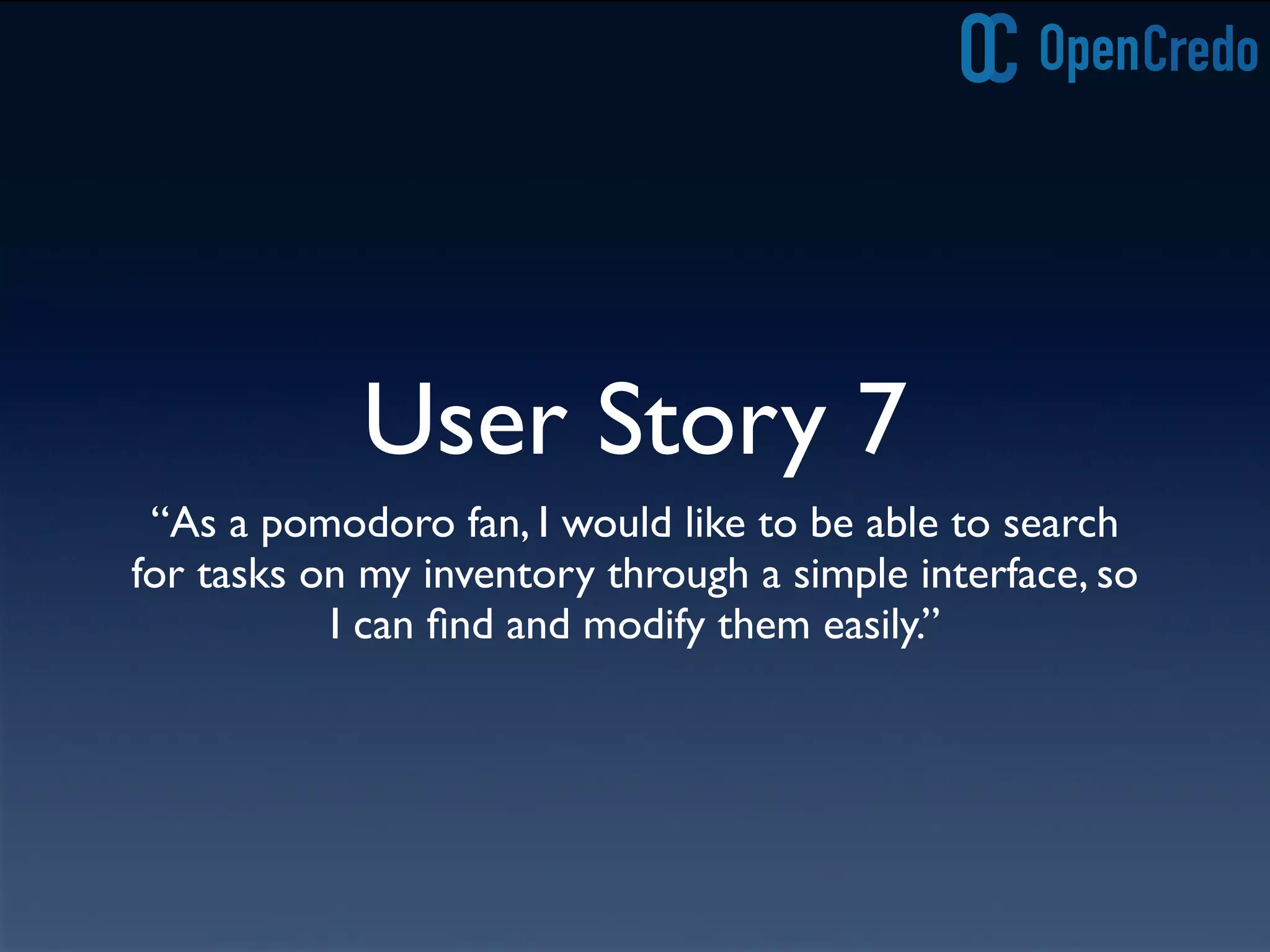
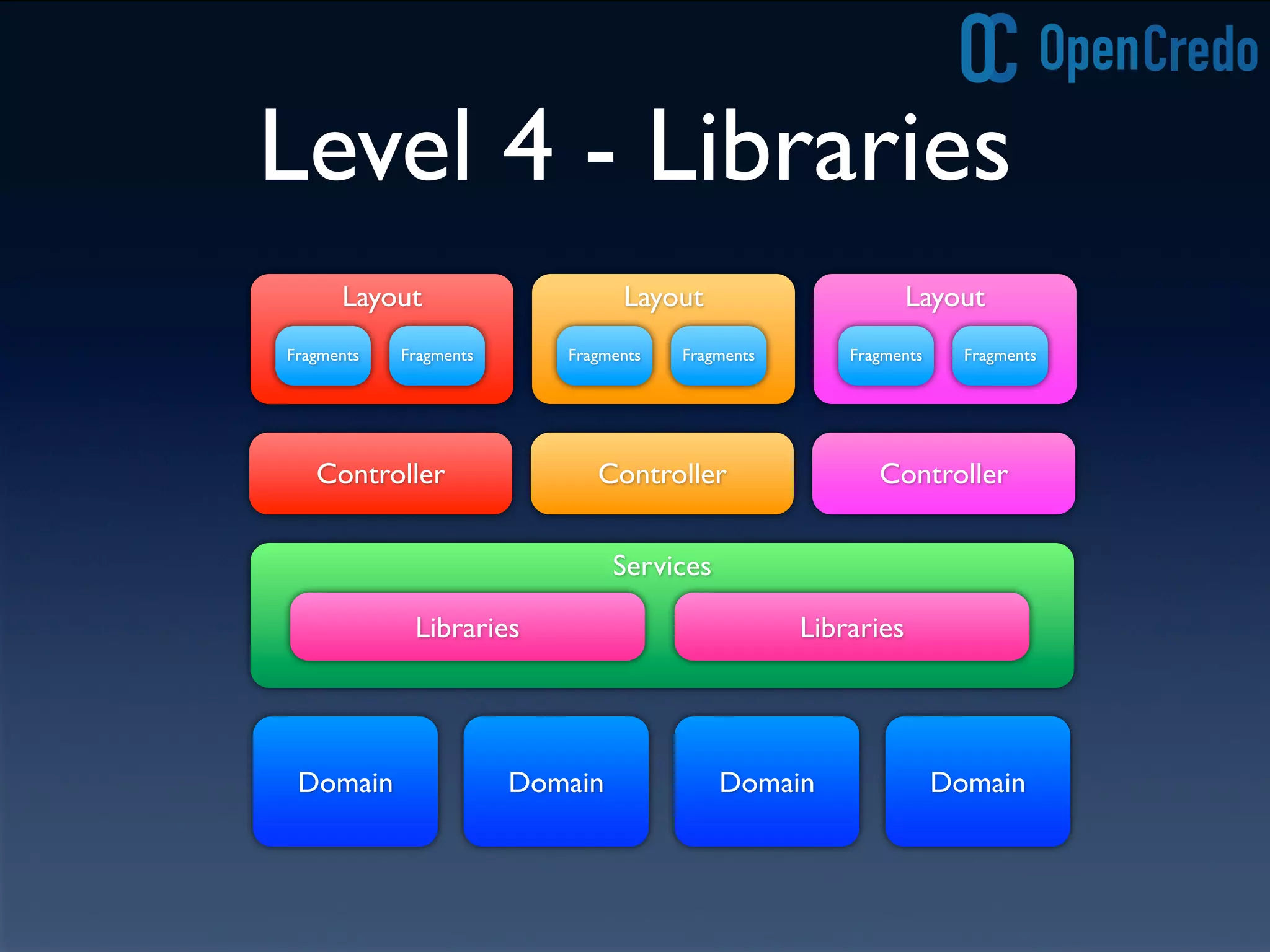
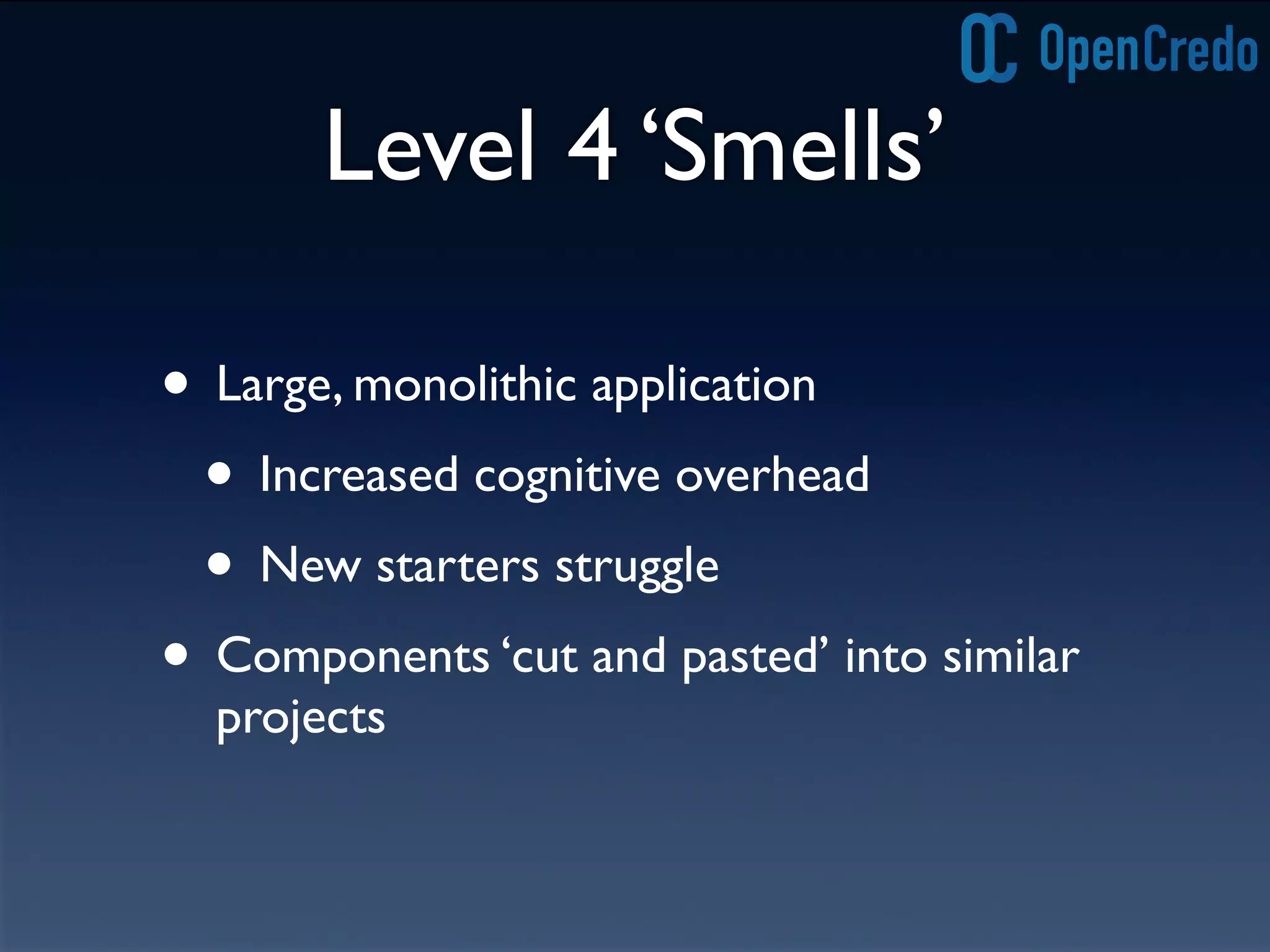
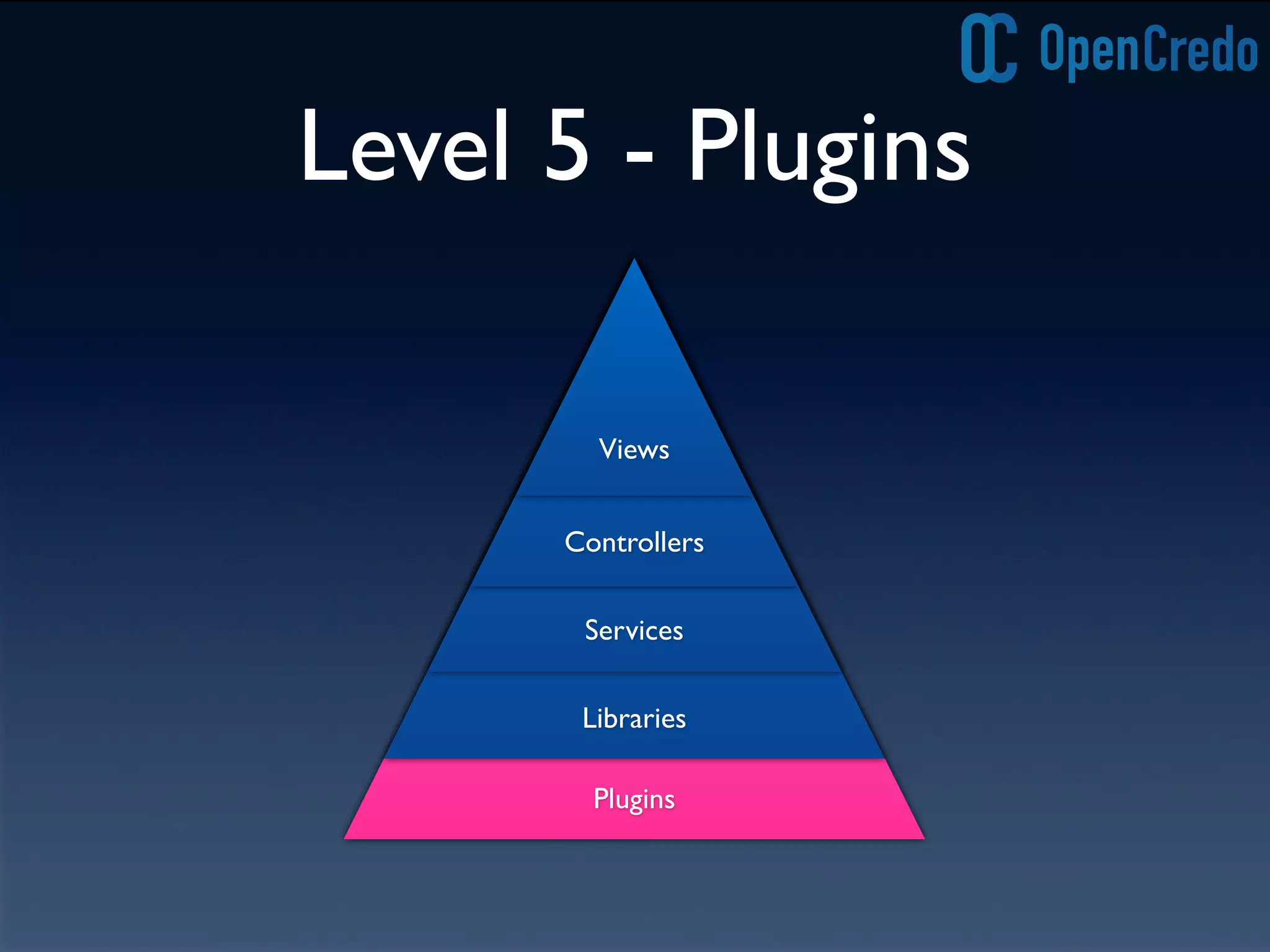
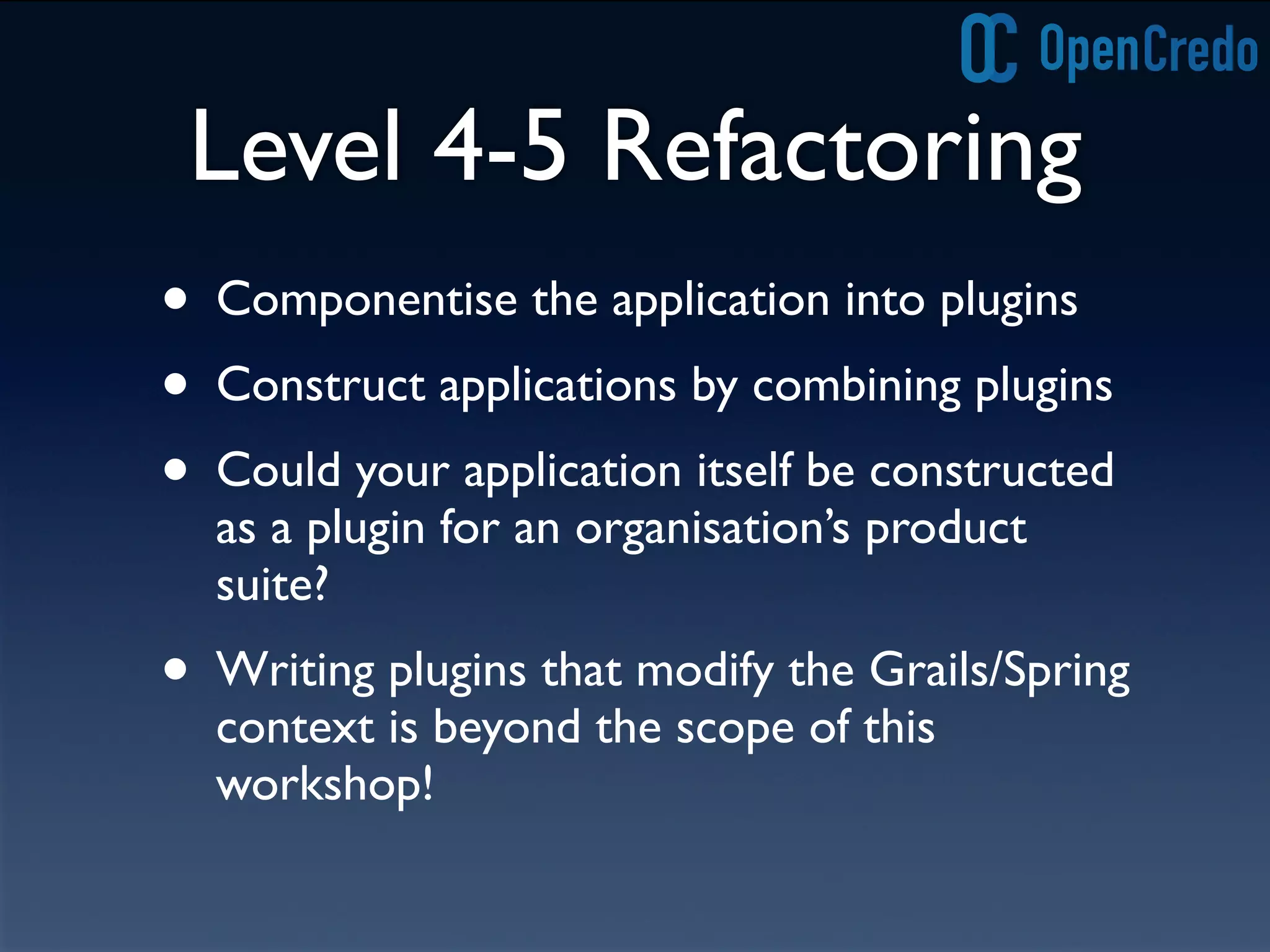
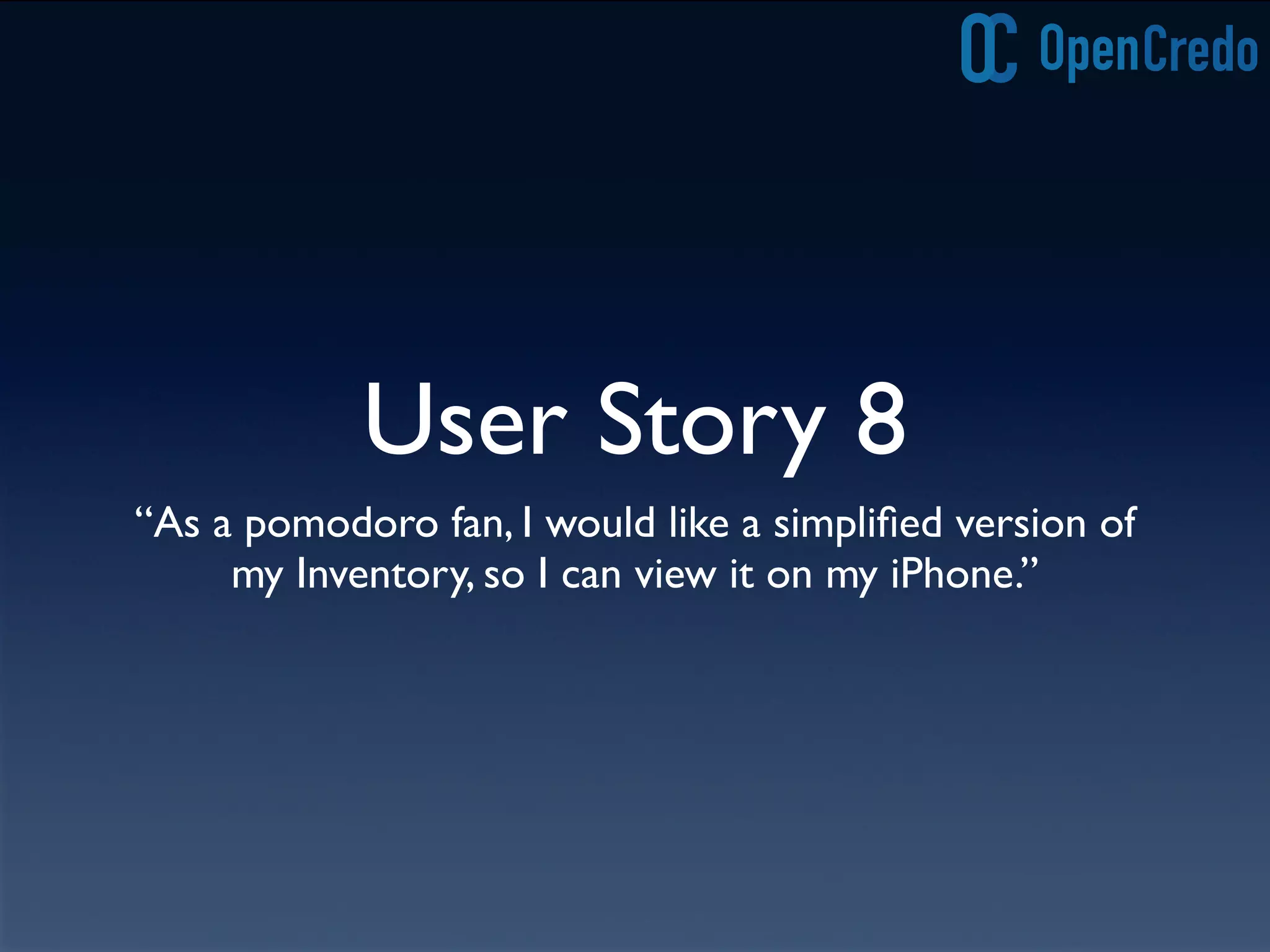
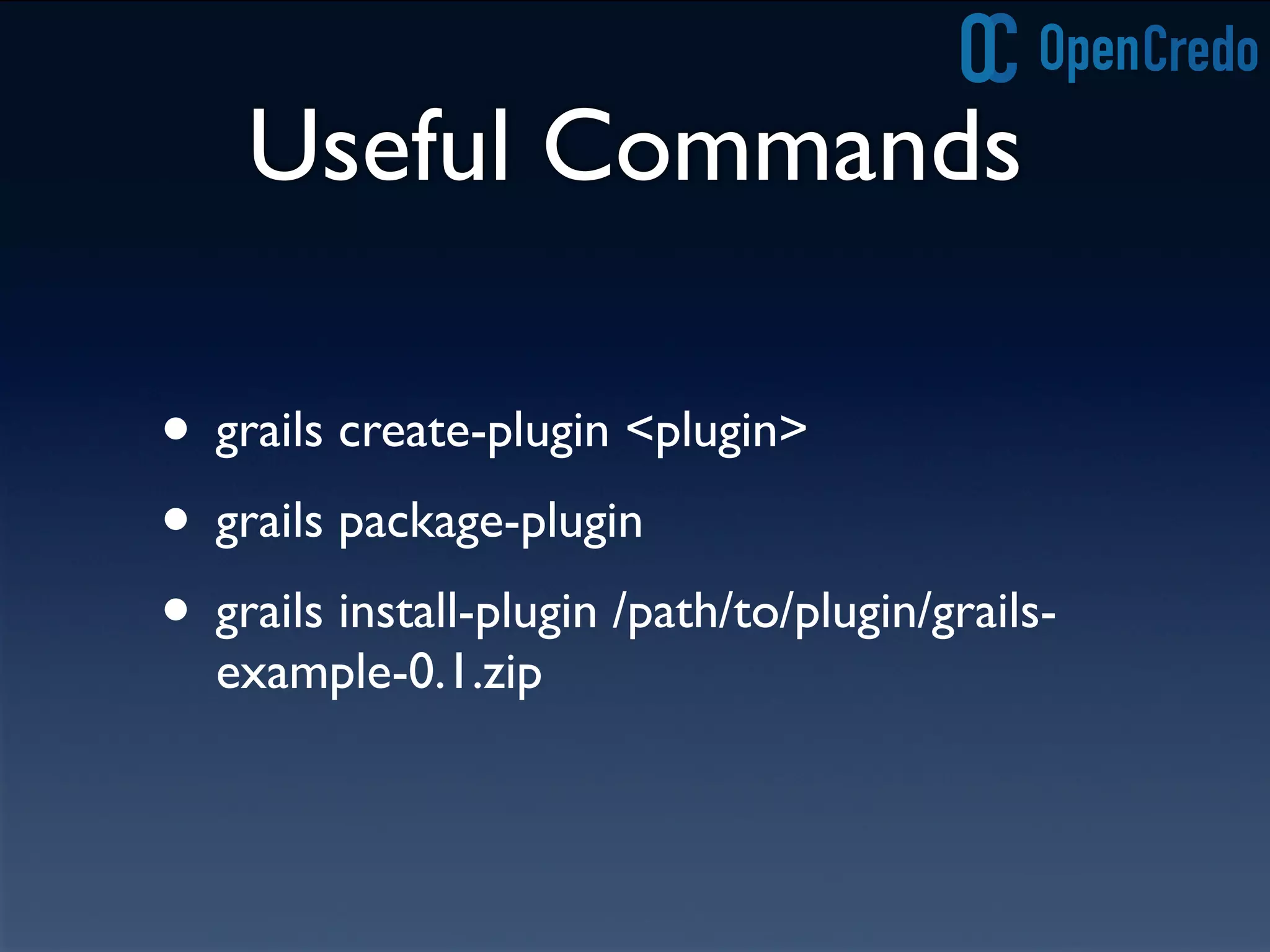
![Layouts and Fragments
<g:include action="show" id="1" />
<g:include action="show" id="${currentTask.id}" />
<g:include controller="task" />
<g:include controller="task" action="list" />
<g:include action="list" params="[sort:'title', order:'asc'] />
<html>
<head>
<title><g:layoutTitle default="An example decorator" /></title>
<g:layoutHead />
</head>
<body>
<div class="menu"><!--my common menu goes here--></menu>
<div class="body">
<g:layoutBody />
</div>
</div>
</body>
</html>](https://image.slidesharecdn.com/grailspatternsandpractices-130726073609-phpapp02/75/Grails-patterns-and-practices-49-2048.jpg)
